Rickubis Bird Page featuring: Grackles
This page was born
02/15/2025, (With material collected from some of my other
pages.) Rickubis designed it. (such as it is.) Last
update: 2/21/2025
Images and contents on
this page copyright ©2002-2025 Richard M. Dashnau
Go back to my home page, Welcome to
rickubis.com
Go
back
to the RICKUBISCAM page.
----------------------------------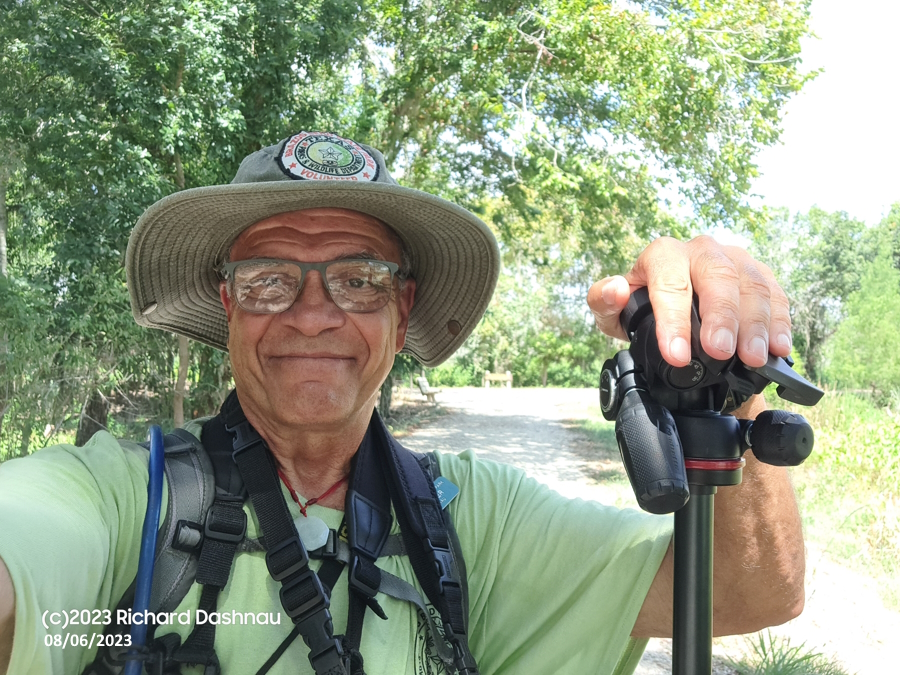 ◄◄◄ at Brazos Bend State Park in 08/06/2023.
◄◄◄ at Brazos Bend State Park in 08/06/2023.
In various times and
places, I have discovered Grackles doing all kinds of things.
Although various tests and observations have shown that they are
apparently not as
"smart" as Covids--such as Crows and Ravens--they show
"Behavioral Flexibility", and are capable of modifying behavior
for problem solving. These abilities have
allowed them to colonize many different environments. I hadn't
collected my own observations of Grackles together until now,
but here they are. For more information
about Grackle "Behavioral Flexibility", you can visit Corina
Logan's Grackle
Project page. The Project's subject seems to be mostly
Great-Tailed Grackles
(Quiscalus mexicanus) but it seems to me that other
species of Grackles can also be pretty tricky--there are
examples below.
02/25/2024 Brazos
Bend State Park
A beautiful day, where there were many things to see (as
usual). There's usually some kind of drama at the
park. I captured a bit of
drama involving another crawfish...And a White Ibis (Eudocimus
albus)...and a Boattailed Grackle (Quiscalus
major). I got a lucky grouping
of photos, so here are some
of them. The Ibis had just caught the Crawfish
(I won't guess what species) when the Grackle swooped in
for meal theft--or as it is also called,
"kleptoparasitism". The
Grackle missed the first try.
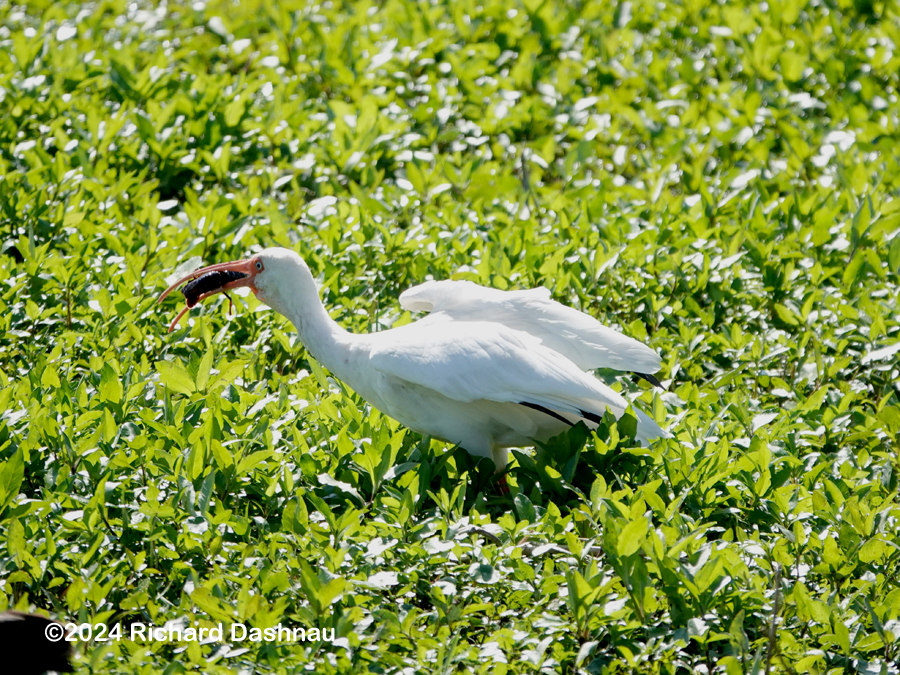
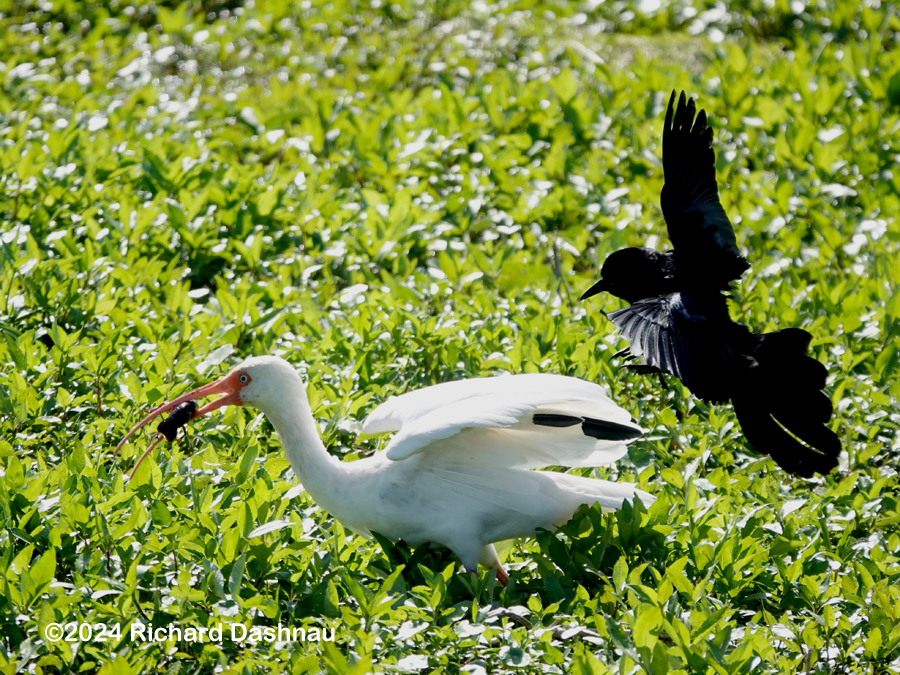
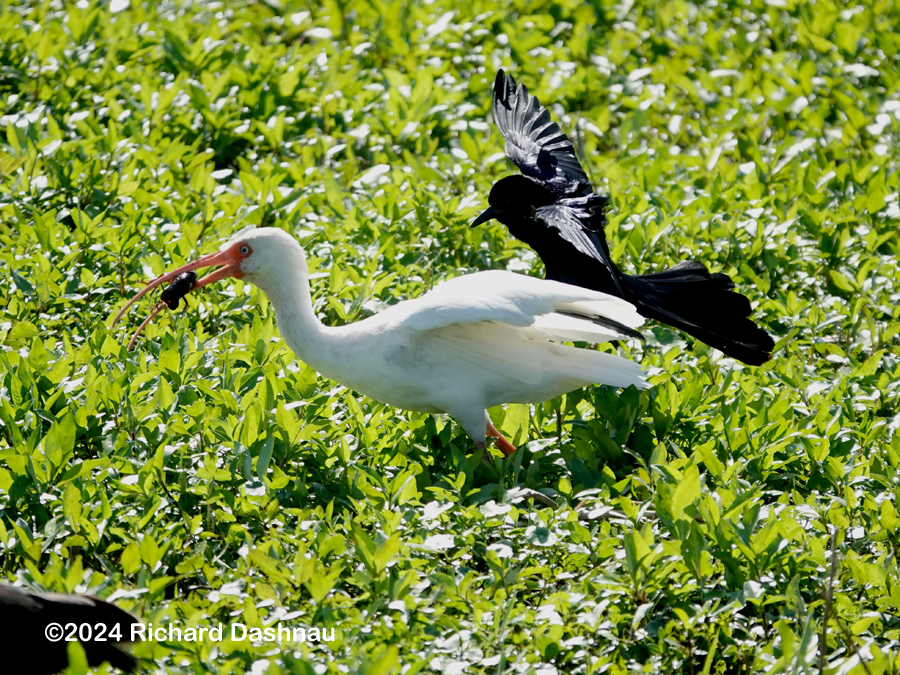
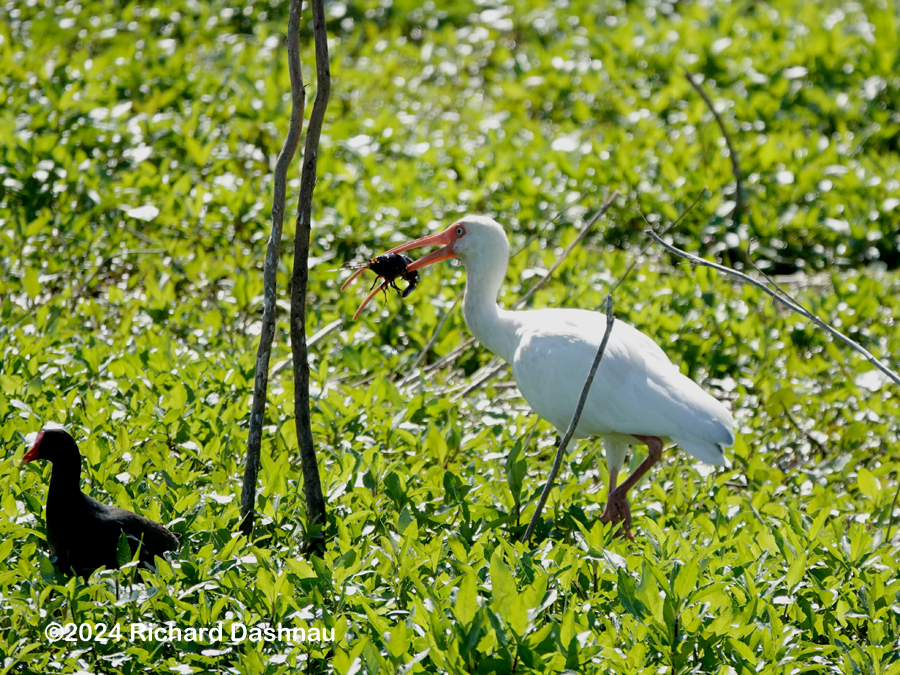
The
Ibis turned the other way, but hadn't gotten far when the
Grackle returned (I'm only assuming it was the same
Grackle). The Grackle
made a very close pass alongside
the Ibis, and the Ibis quickly turned away.
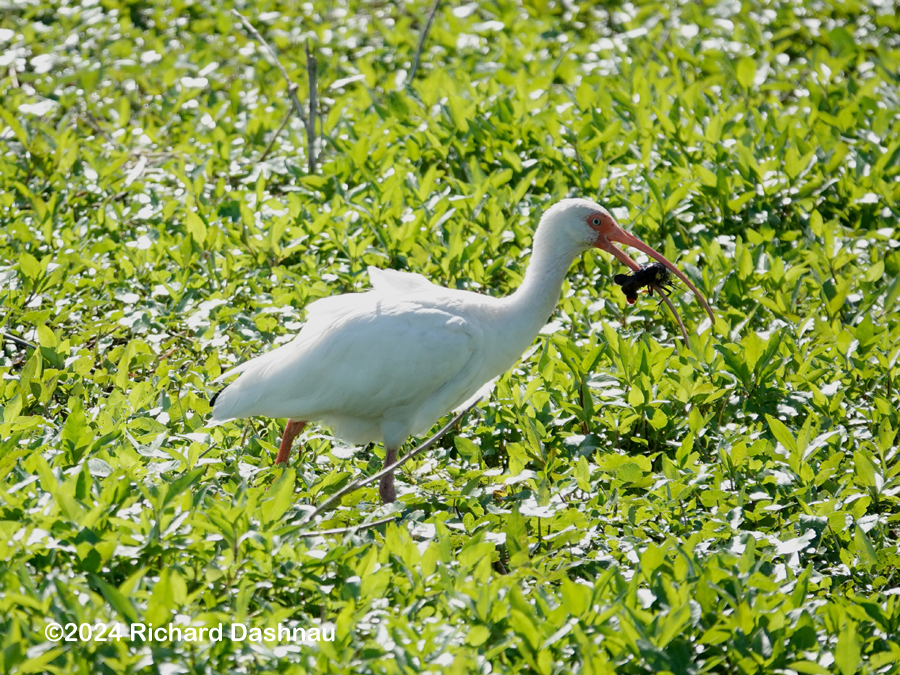
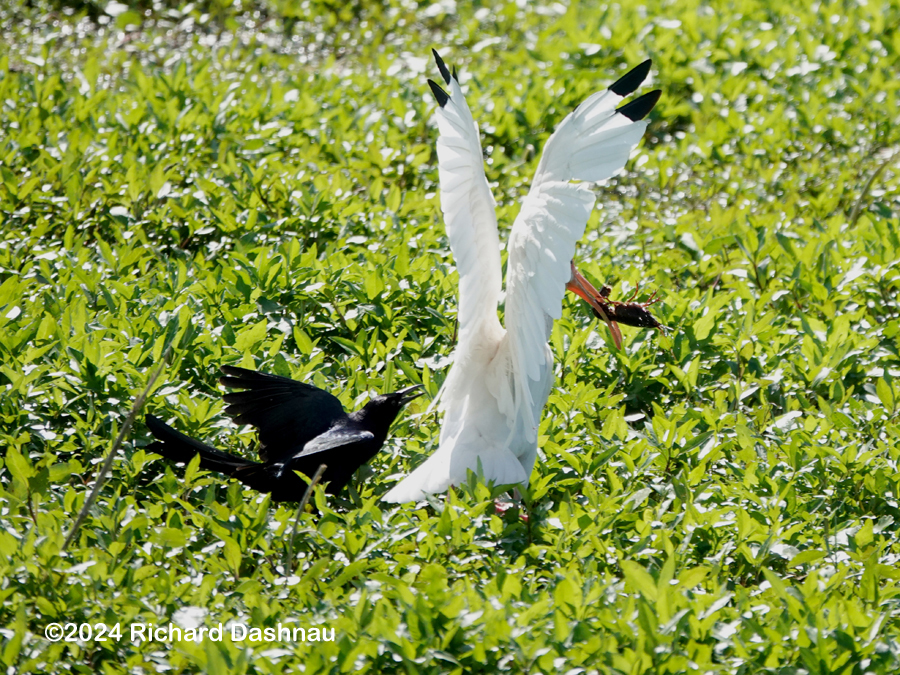
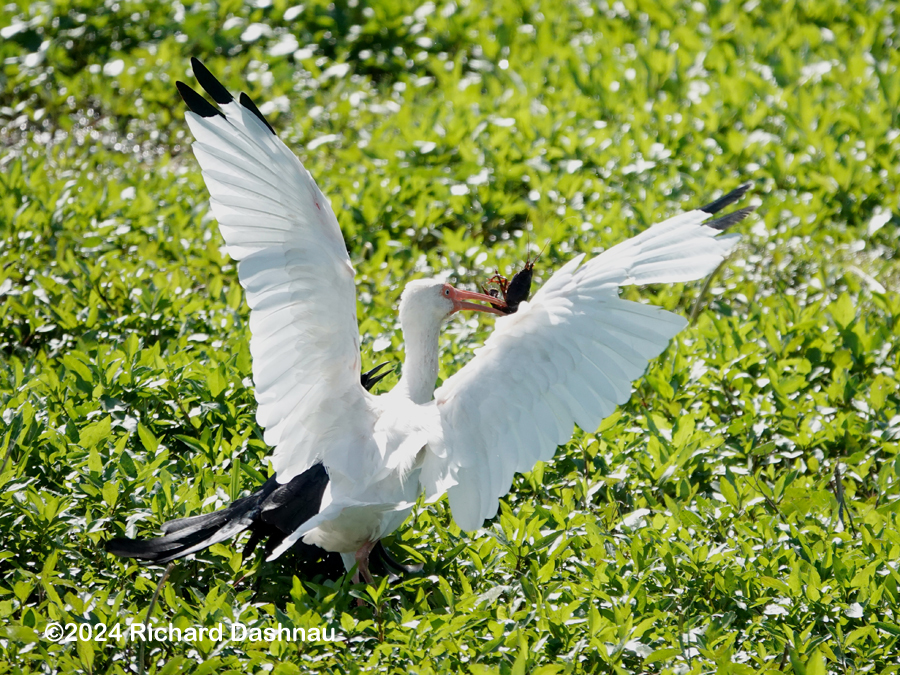
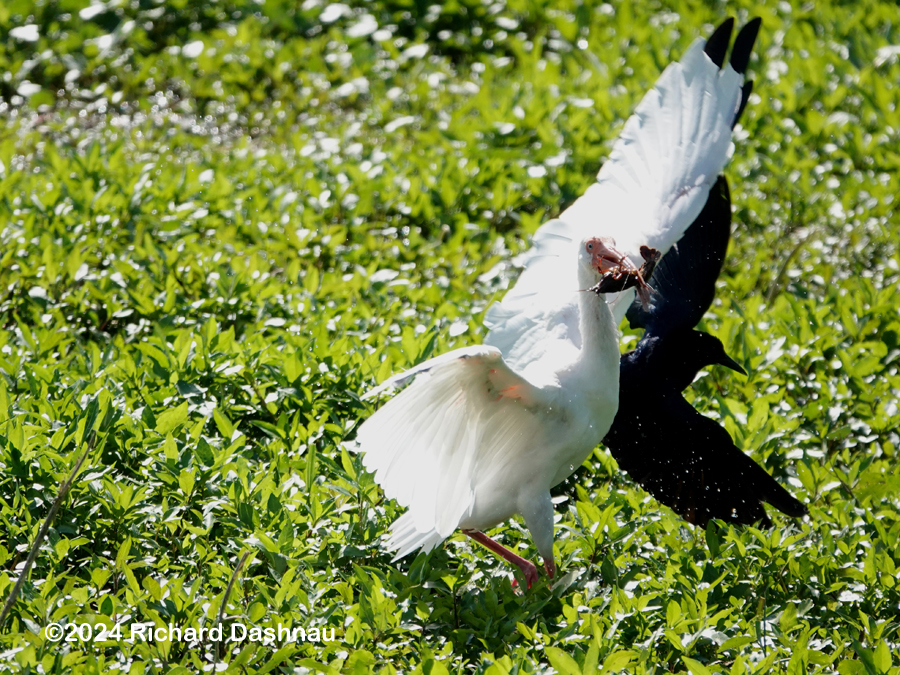
When the Ibis finished its
turn, the Grackle regrouped and tried again. This was
all happening quickly. When it was live, it appeared
that the Ibis used its wings to shield
its prey, or to beat away the Grackle, but it might have
just been spreading its wings to take off.
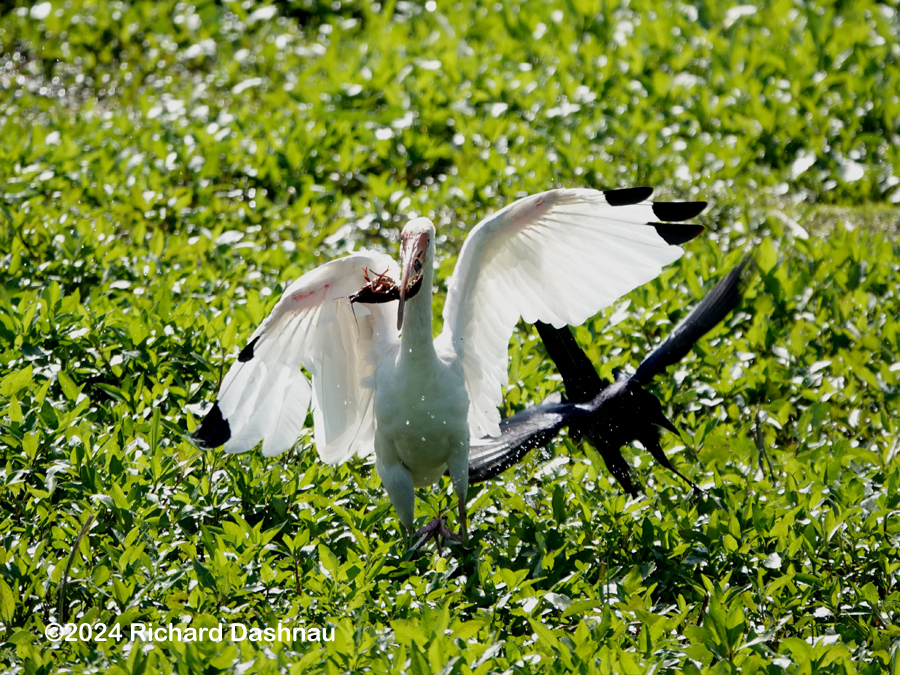
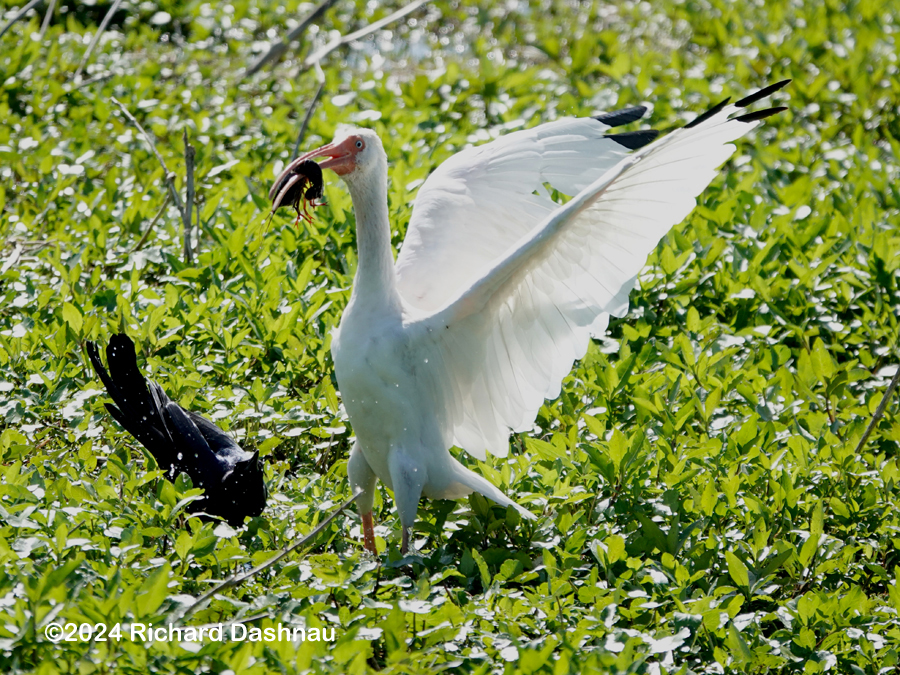
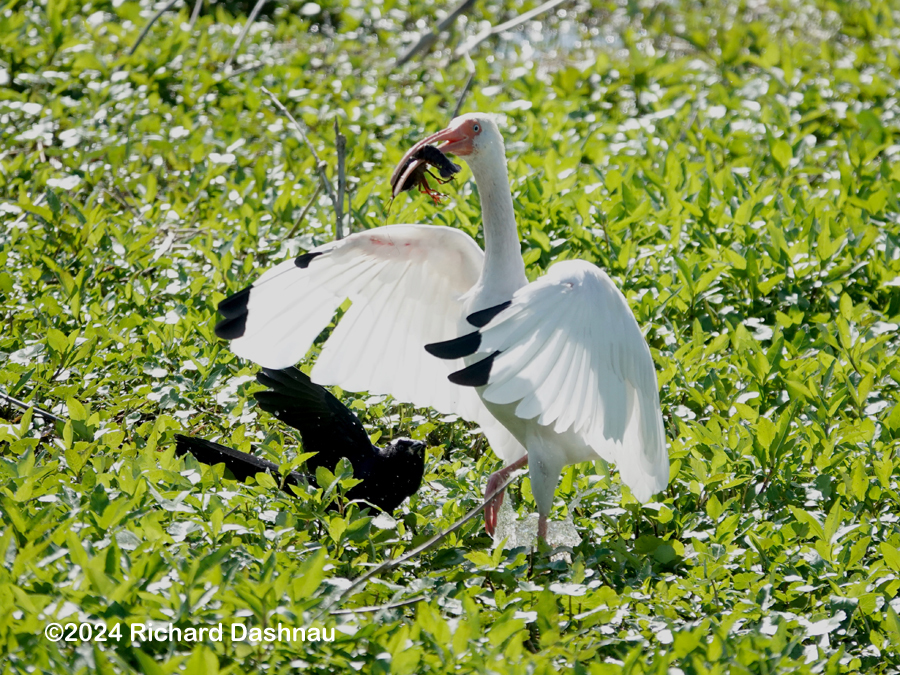
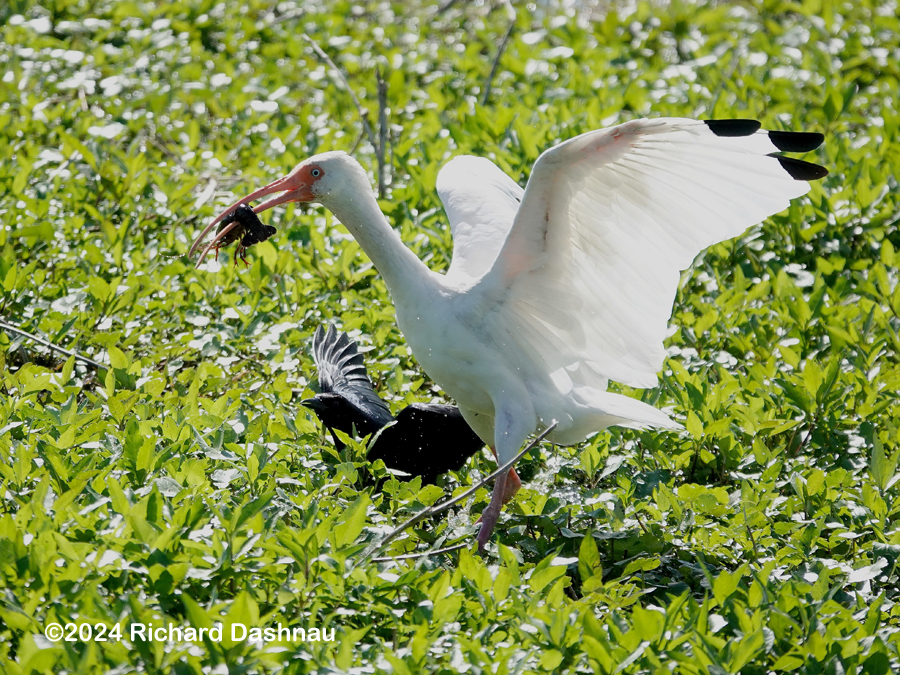
The
Ibis took off, with the Grackle in close pursuit.
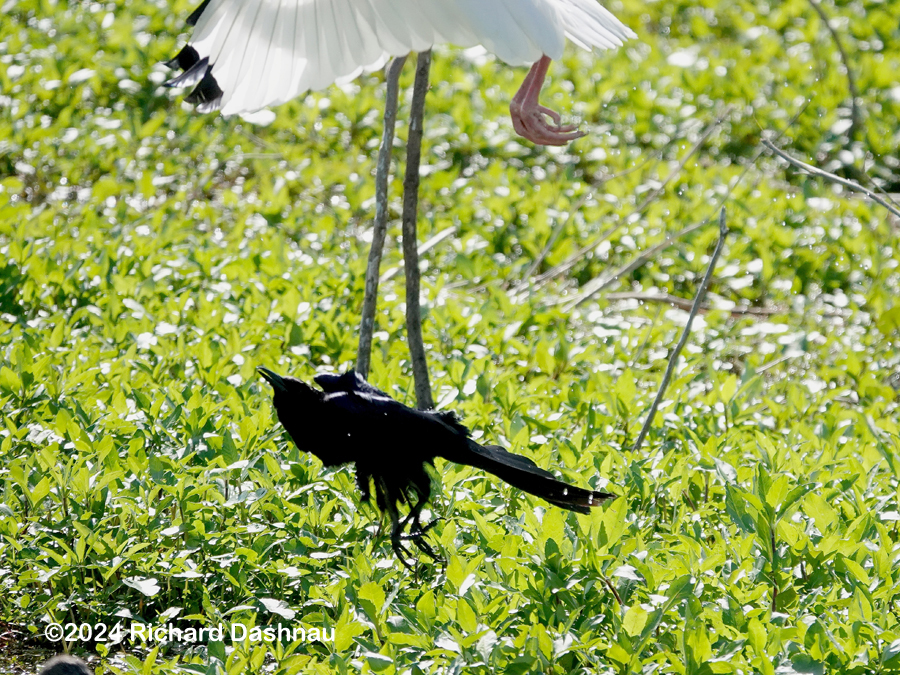
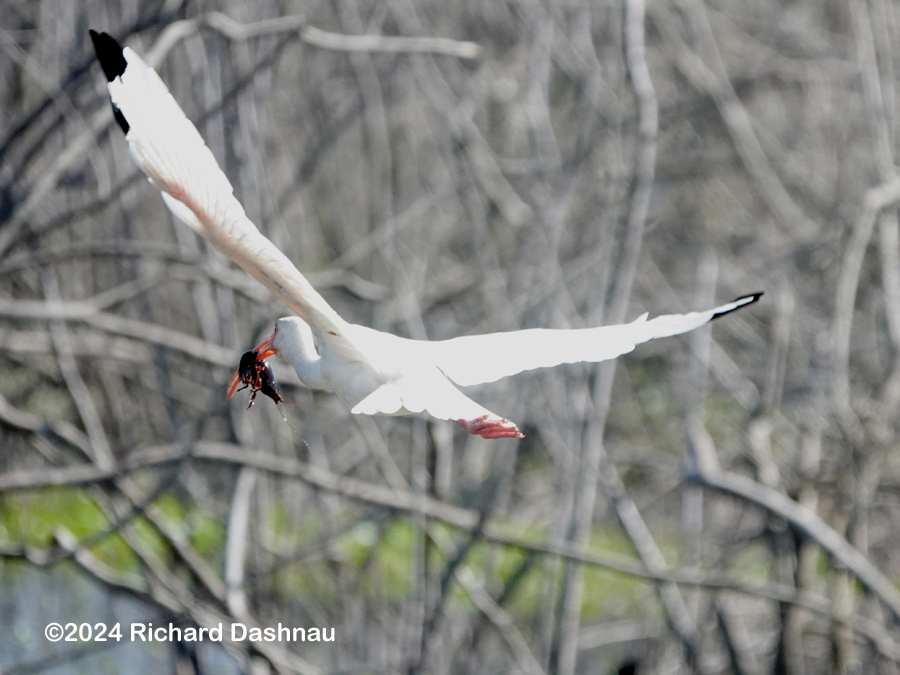
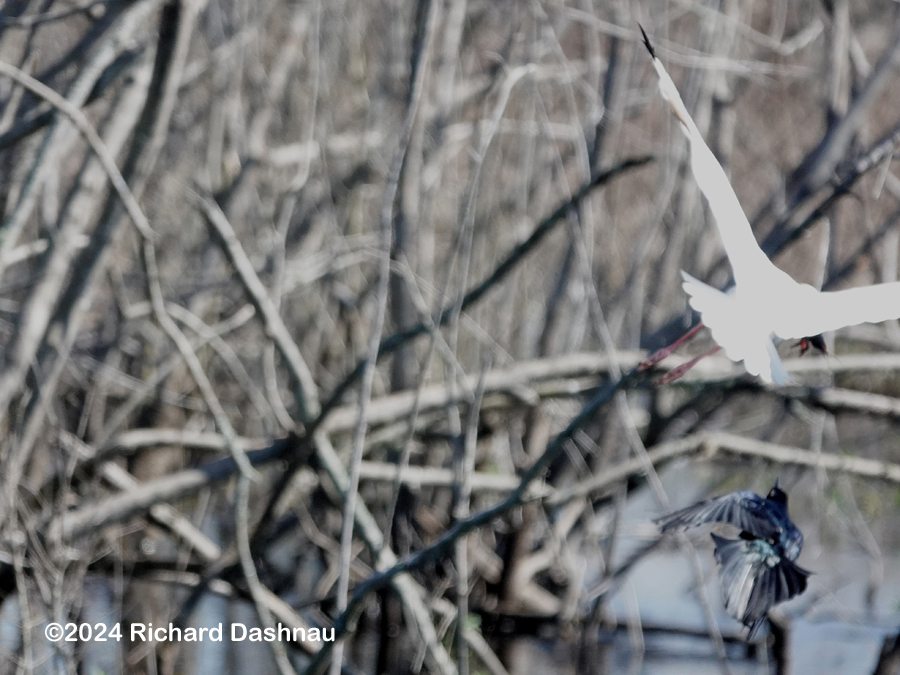
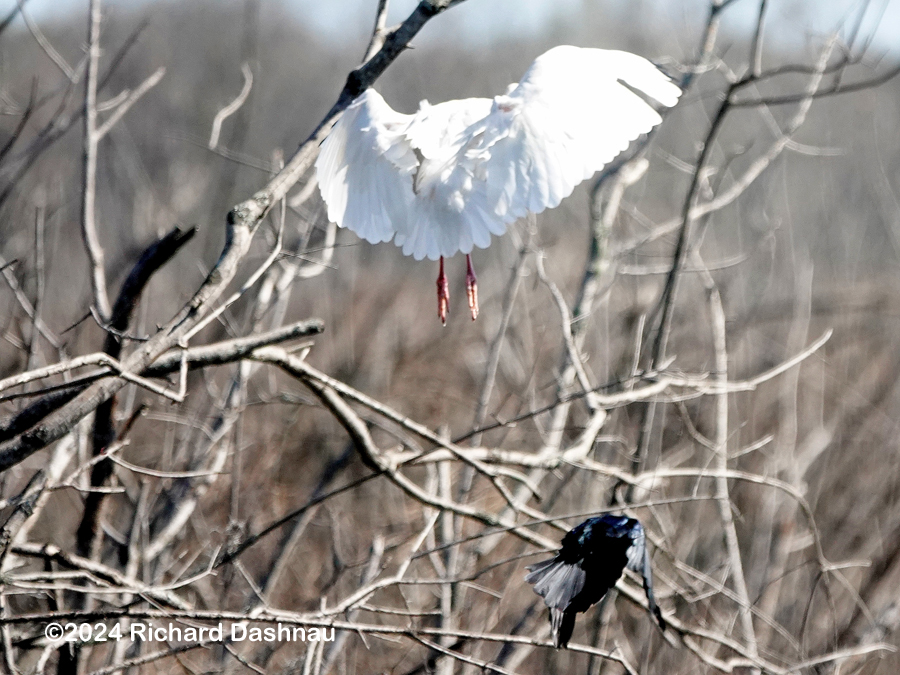
When the Ibis landed on a
branch, maybe to reposition the crawfish, the Grackle
could catch up. It tried again by coming up from
below, twisting in the air to grab at the
food.
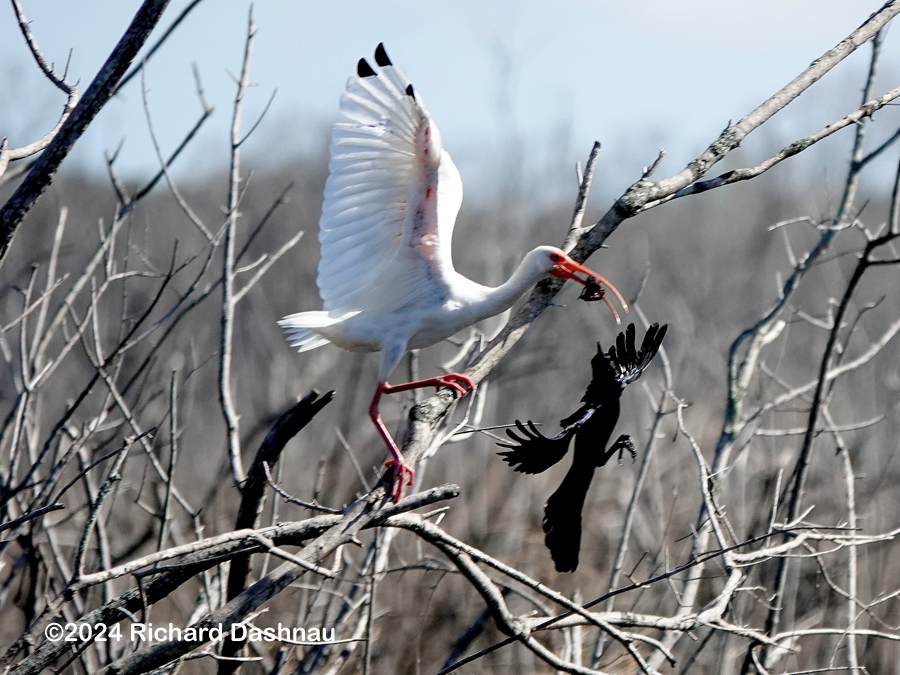
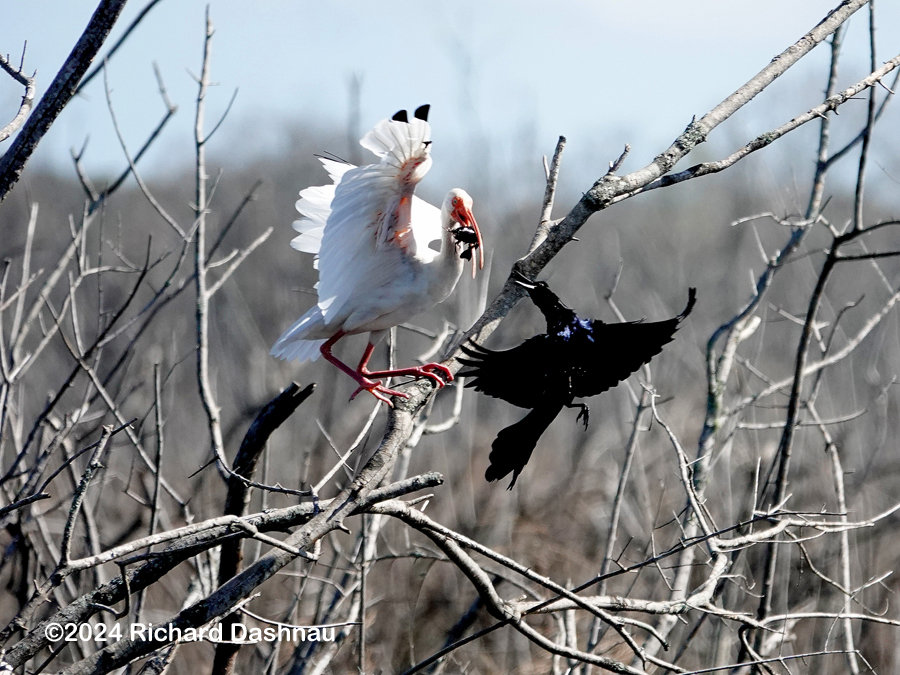
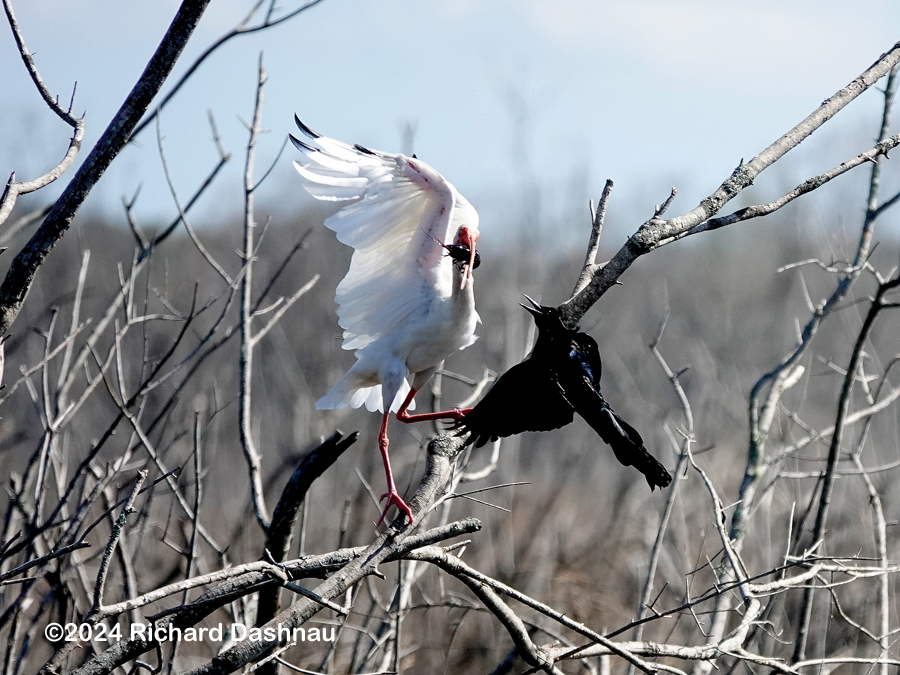
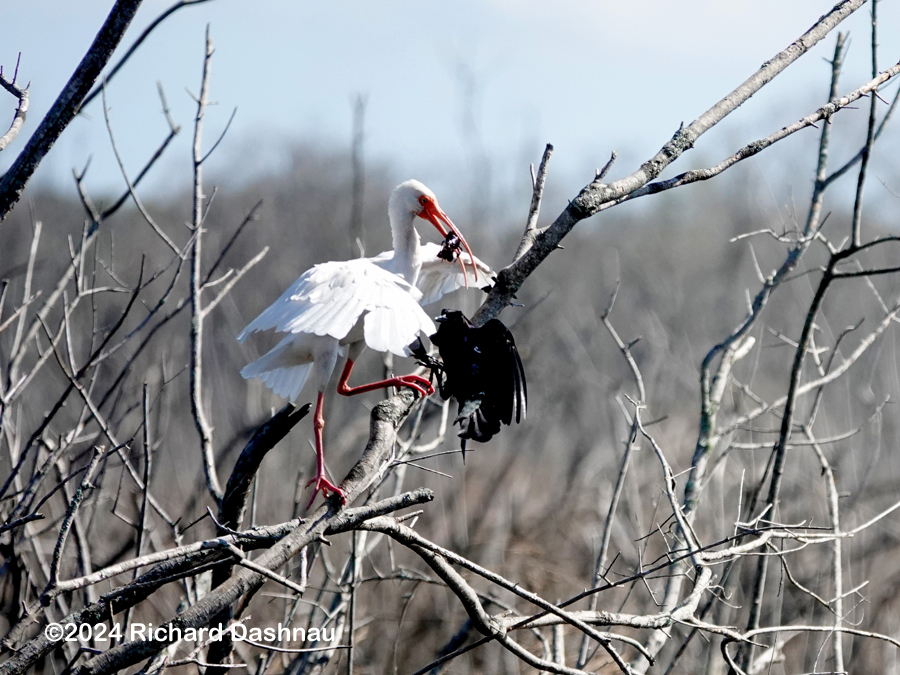
The
Ibis eluded the grab, and the Grackle descended.
The Grackle gave up and I left while the Ibis was
still in the tree, tossing and chewing the crawfish.
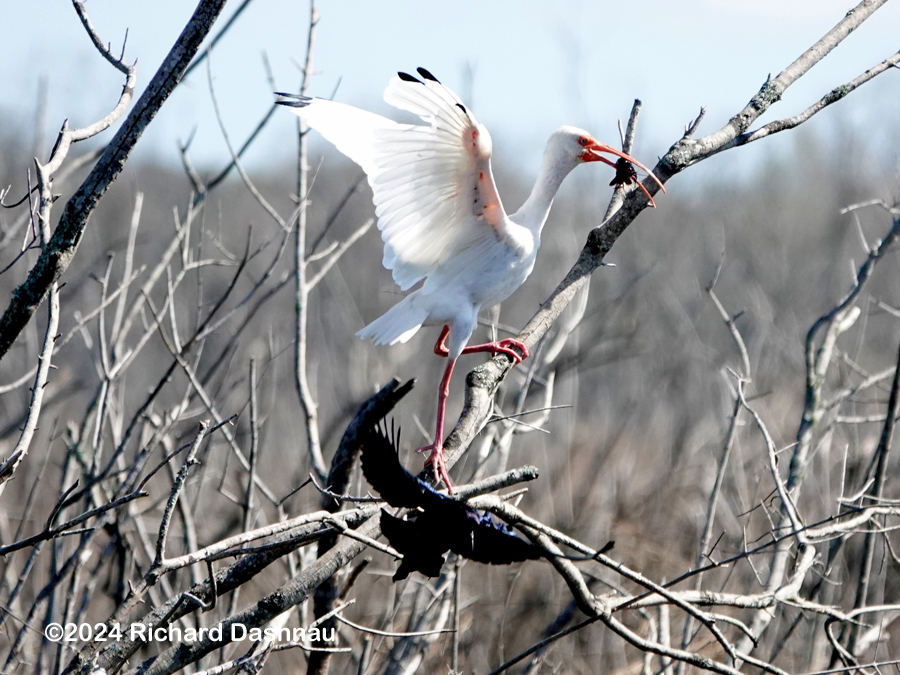
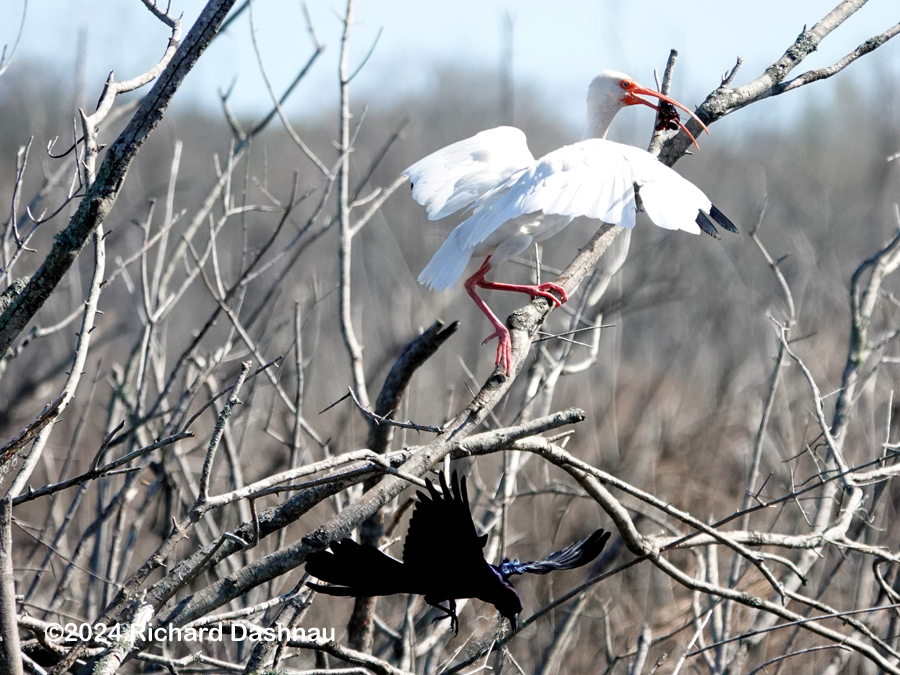
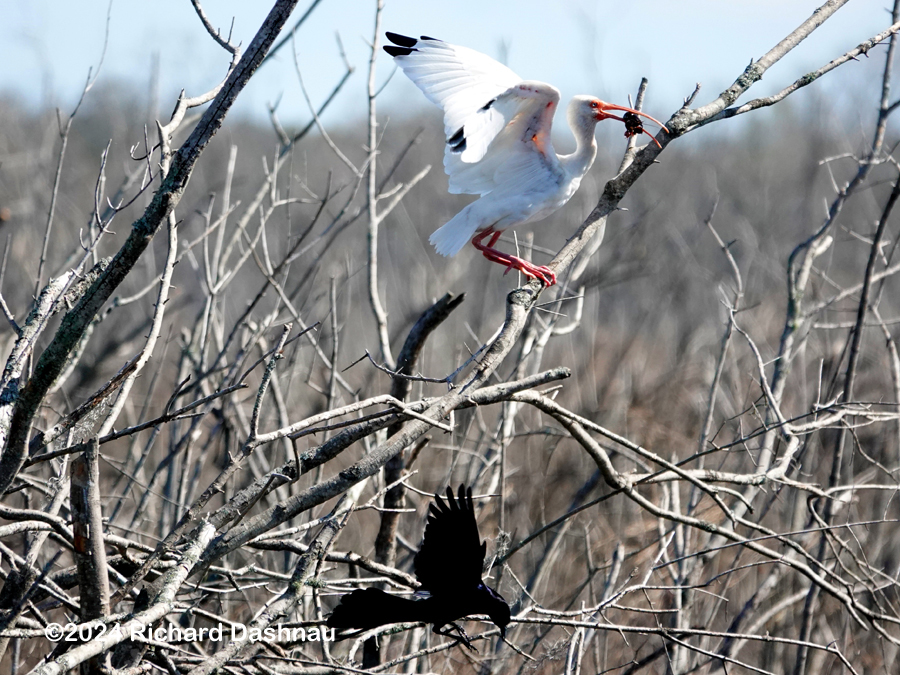
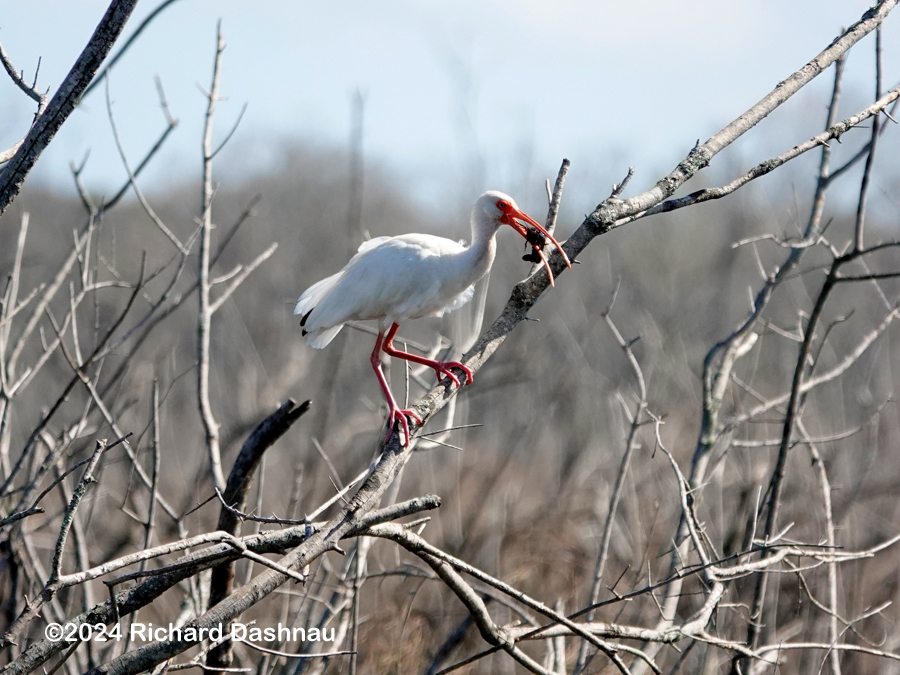
02/25/2024
Brazos
Bend State Park A
beautiful day, where there were many things to see (as usual). I
started back towards my car about 2pm. I saw a Boattailed
Grackle
(Quiscalus major) pull a
something out of Pilant Lake near the drainage culvert at the Tower.
It landed in a tree right next to me, and I peeked through the
branches to see
what the bird had caught. It was a Crawfish.



(added
2/21/2025) In Houston 05/18/2022
I've observed that some Cicada nymphs seal their burrow with a
mud cap. (shown on my web page here). I'd also seen
Grackles
foraging in this area. Then I noticed that the
Grackles apparently recognized the mud caps, and picked them
apart to look for food! I was too late to capture this Grackle
digging. The
Grackle carried off the nymph. The Grackle didn't crush
and swallow the nymph immediately, but picked at it for some
time, possibly picking off limbs. The first image below show
where the Grackle used its beak to excavate the Cicada
nymph burrow. The Grackle snipped, pinched, and poked with its
beak to break into the shell. After a while, the Grackle
broke through the nymph's exoskeleton. Because
of the really long tails, and their yellow eyes, I believe the
Grackles I see most at the park are Great-tailed Grackles
(Quiscalus mexicanus).
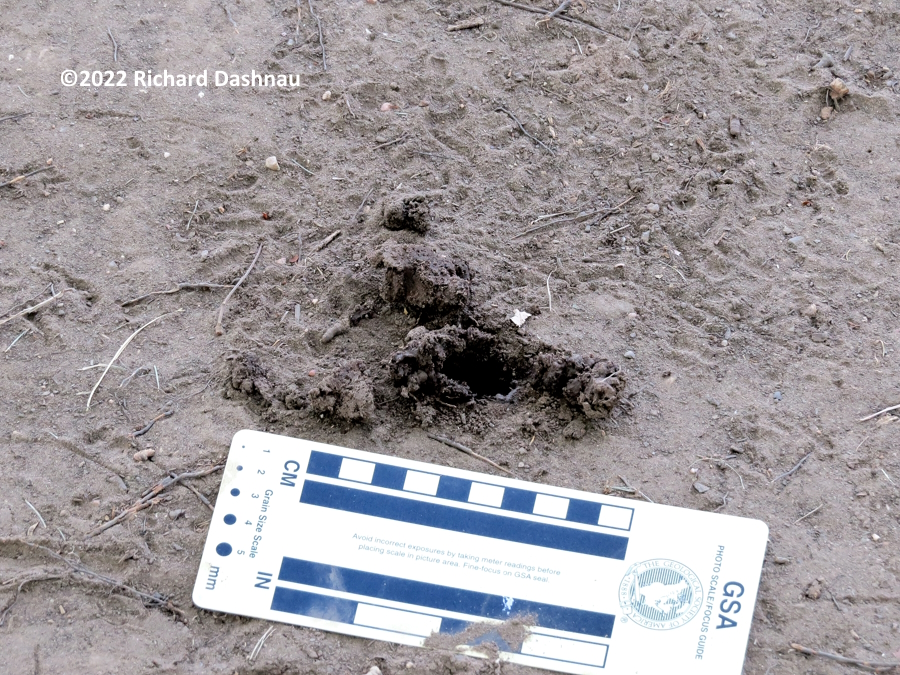
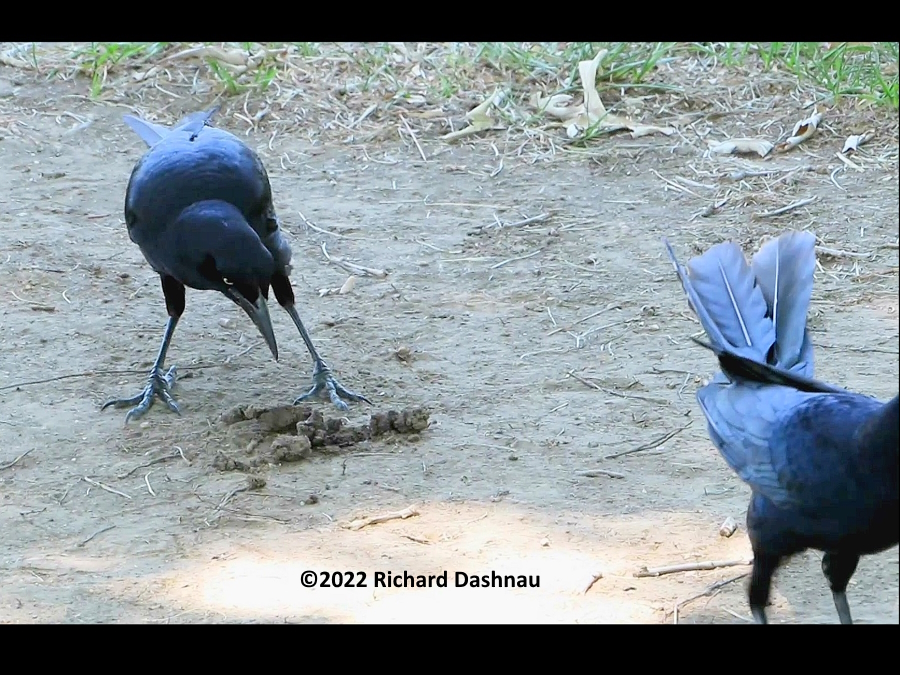
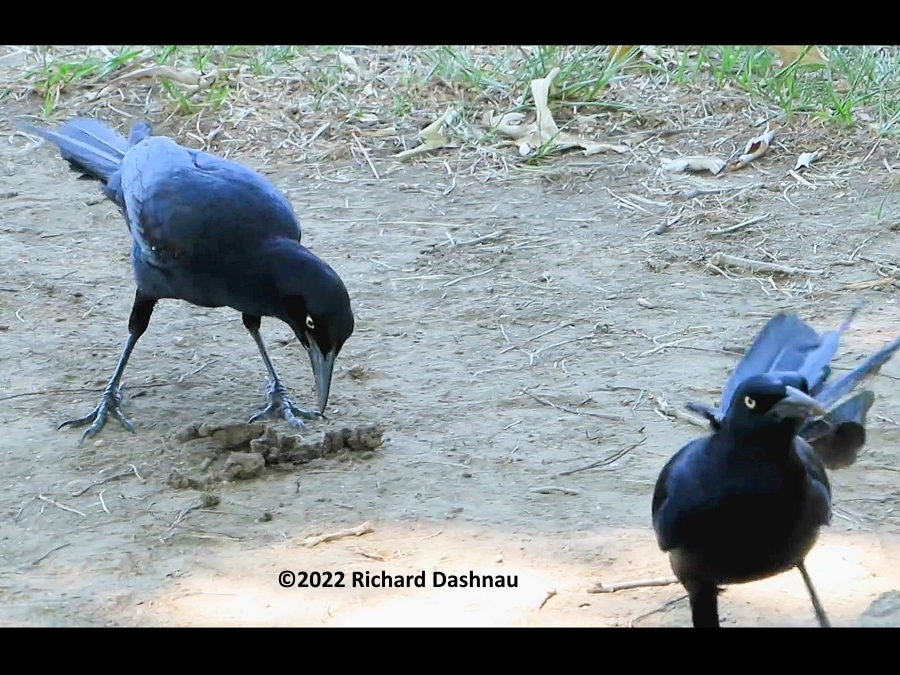
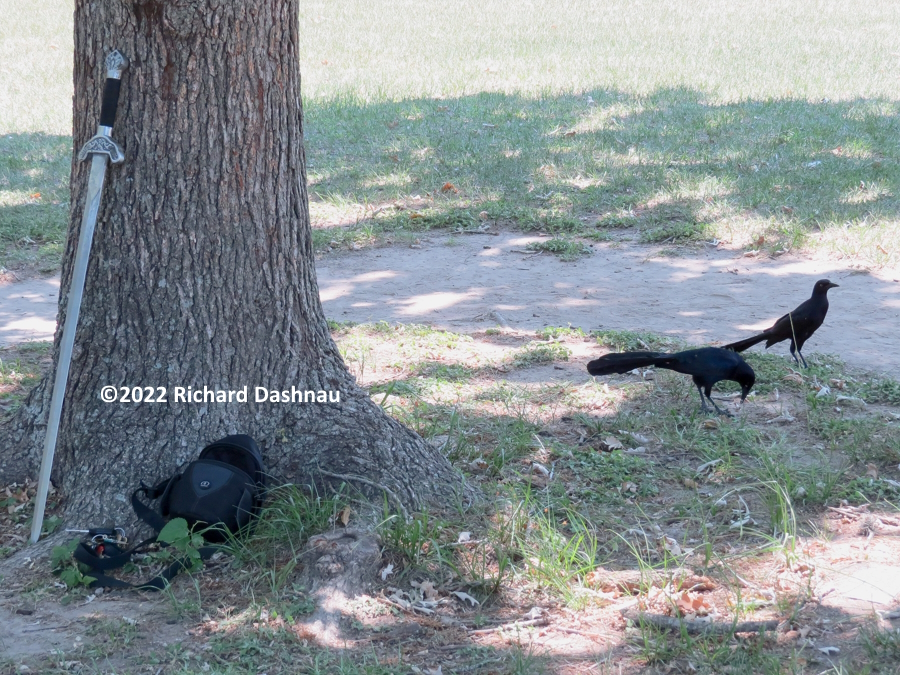
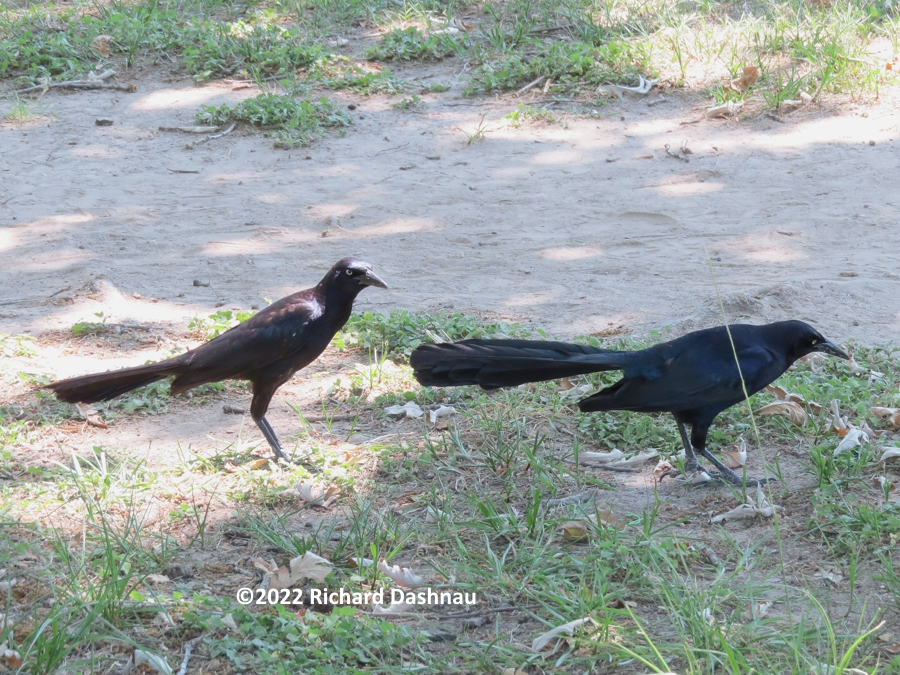
The
Grackle pushed its beak inside and used the tips to pry the
shell open while holding the insect by stepping on it. The
Grackle picked out some of the gooey material. This didn't
seem to have much rigidity. Was this because the nymph had been
changing to adult form? Back to normal speed, as the Grackle
finally swallowed big chunks of the nymph.
I've put the captured clips into this edited video.
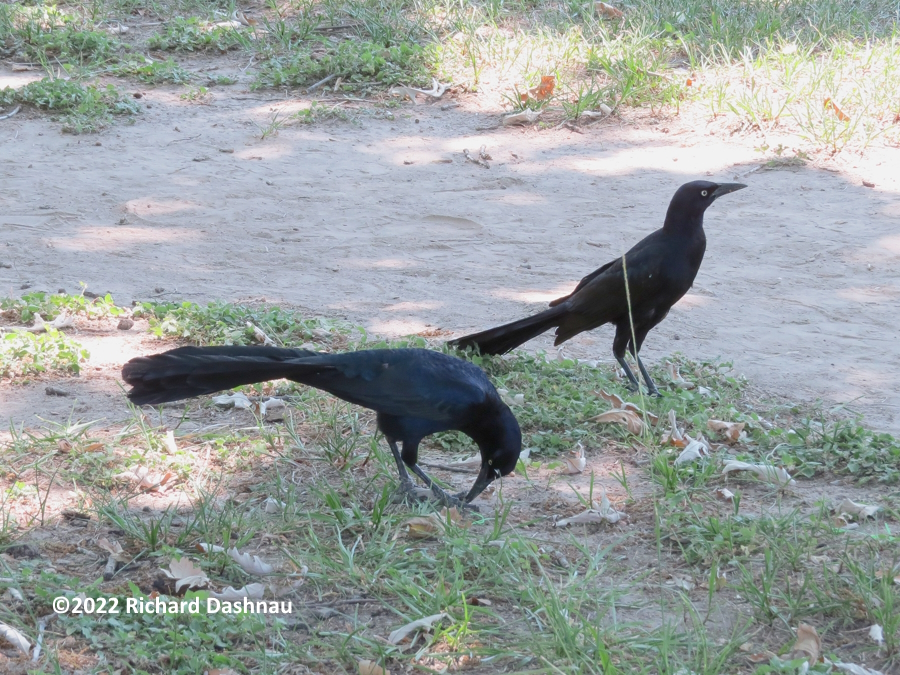
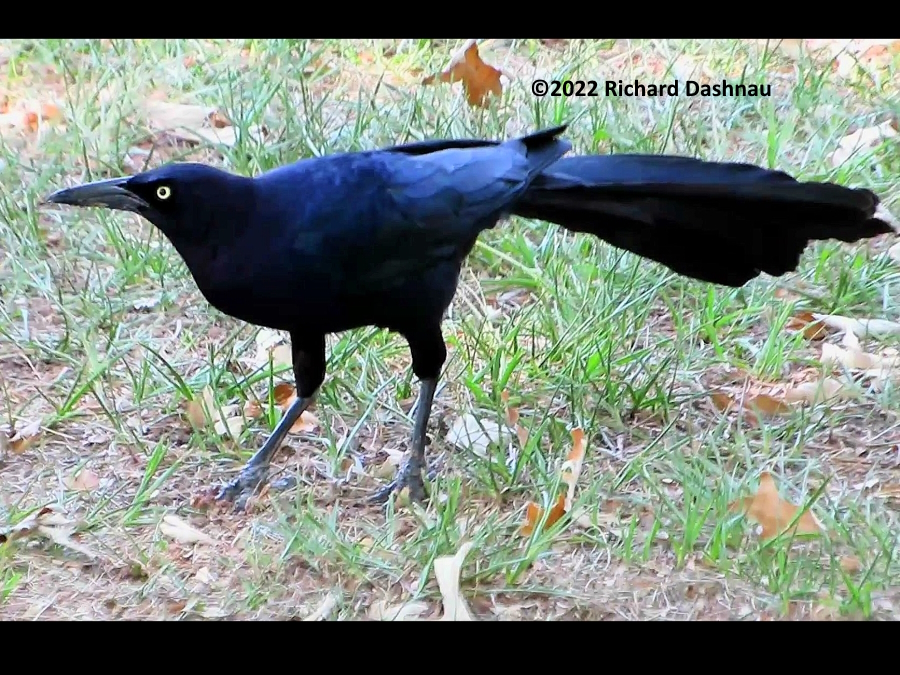
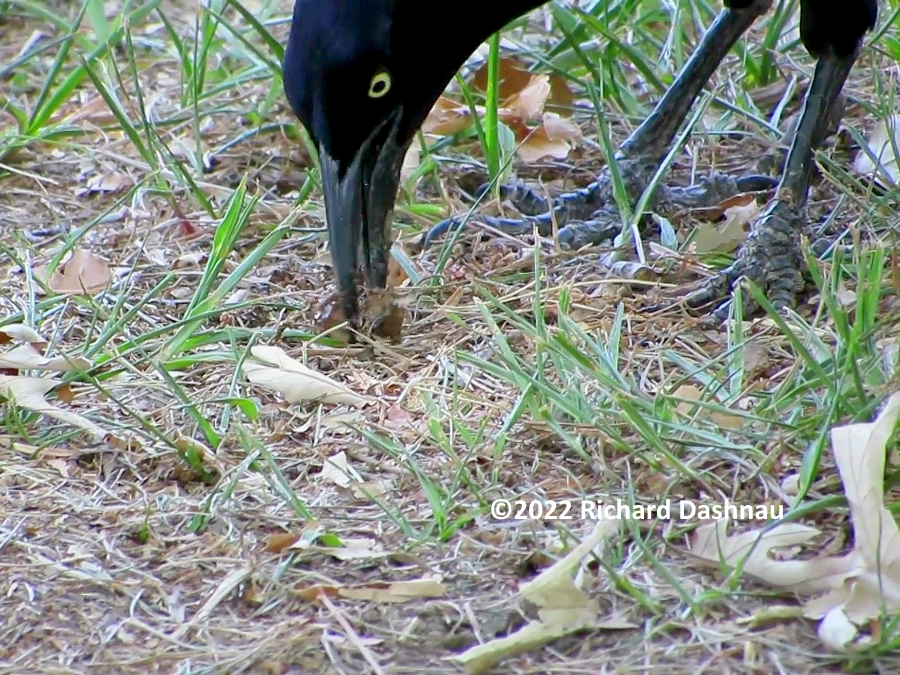
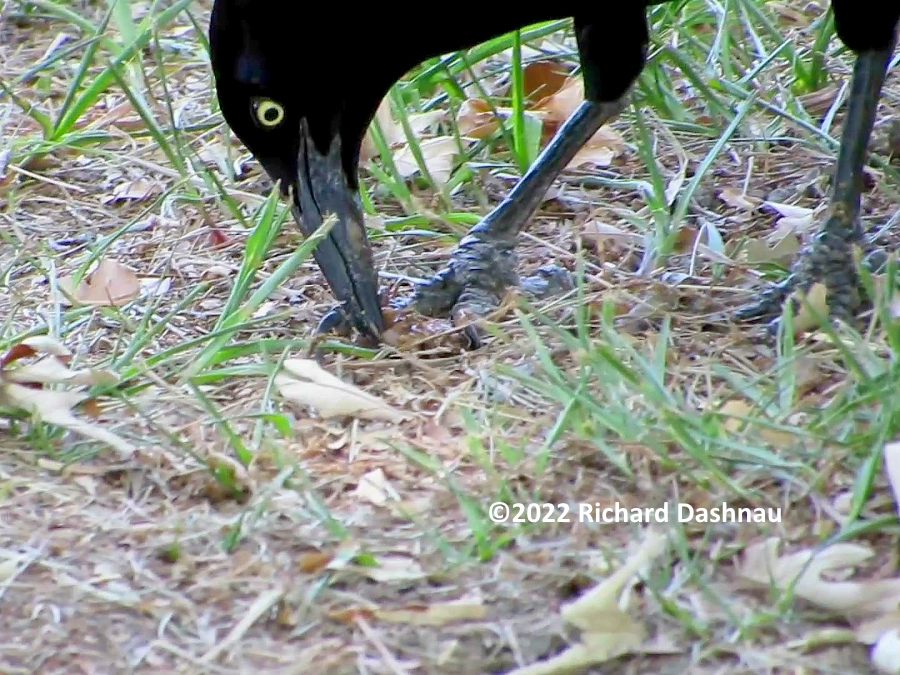
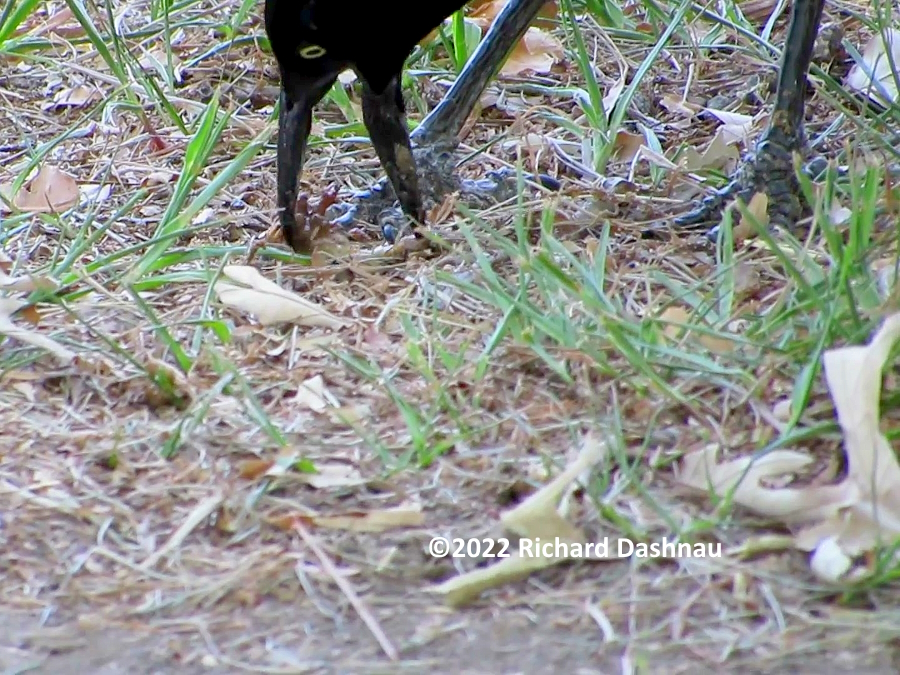
In
Houston on 05/11/2022
At my exercise area, I noticed another mud "cast" on the dirt
trail.This time, I thought I knew what it was (because of what
I'd seen a week ago), so I got
the camera before investigating. About
30 minutes later a Great-Tailed Grackle (Quiscalus mexicanus)
landed nearby (as they often do while I'm working out), and
began foraging.
I happened to be looking at it when it noticed the "cicada plug"
and moved towards it. My camera was on the ground near the plug.
I moved to the camera as the Grackle moved
towards the plug and started to pry it up. I hoped to
capture this on film but the grackle stopped digging and moved
away when I picked up the camera . So the most I could do was
take pictures of the excavated plug. I moved around
the tree to letthe Grackle continue, when it found another
cicada hole and started digging at it. I got a few pictures some
video,
but the grackle gave up and walked off. This
is another example of Grackles recognizingand exploiting a
food source. They (or at least one of them) recognized a small
pile of dried
mud as a place to dig for food! Exploration of
anopen hole is also noteworthy--although I think many animals
explore voids or openings in the environment. For the Grackle to
recognize that the pile
of mud was different and worth investigating seems
pretty cool.
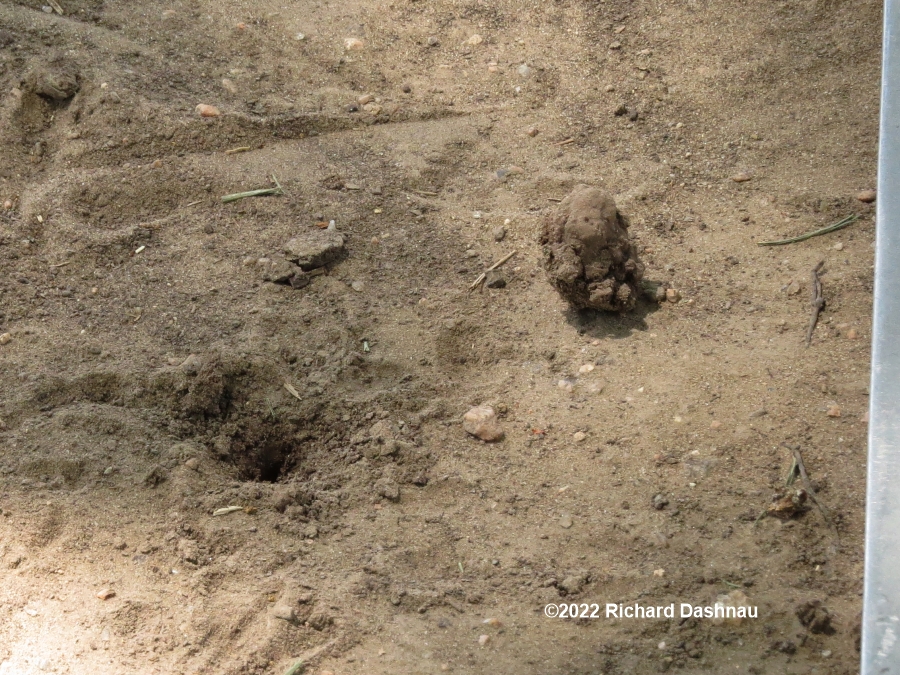
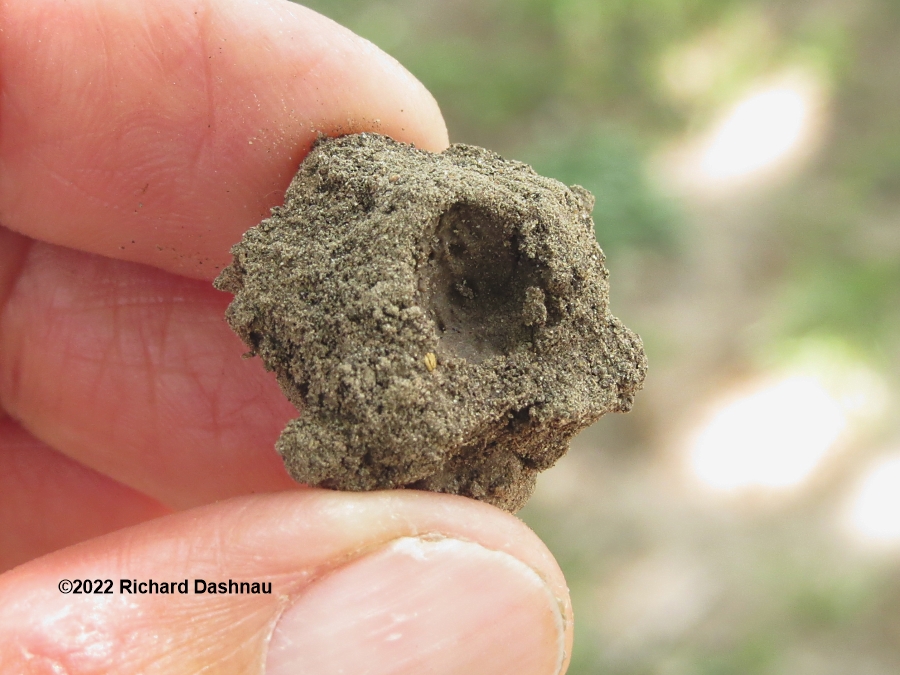
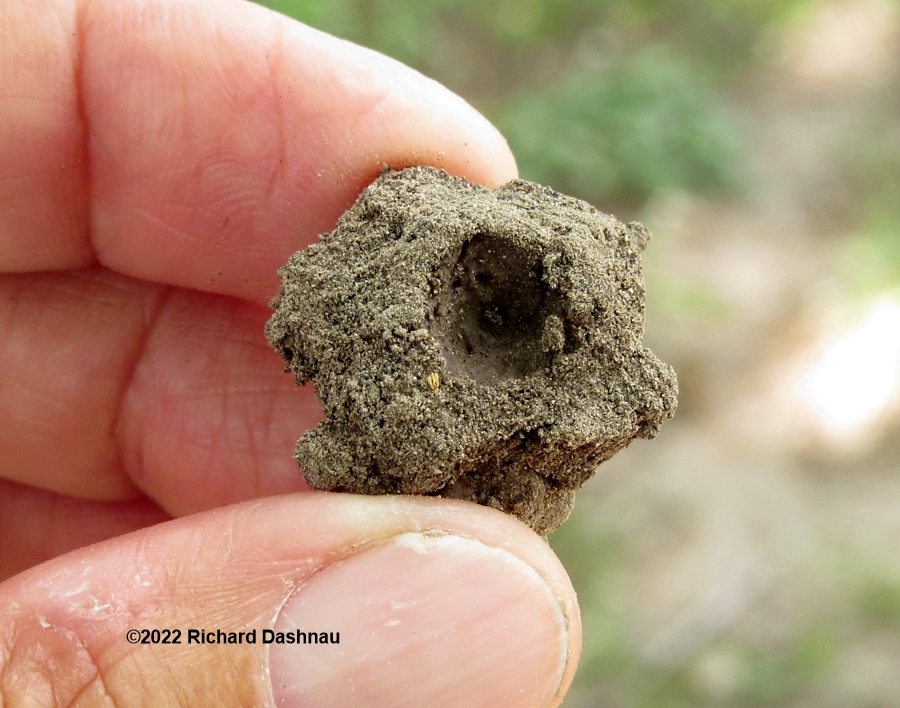
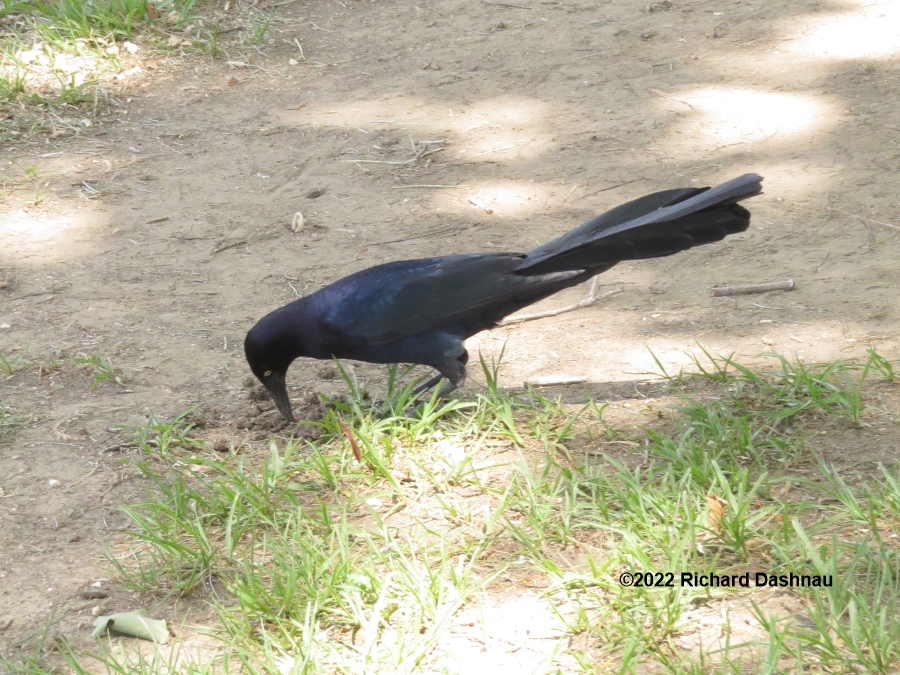
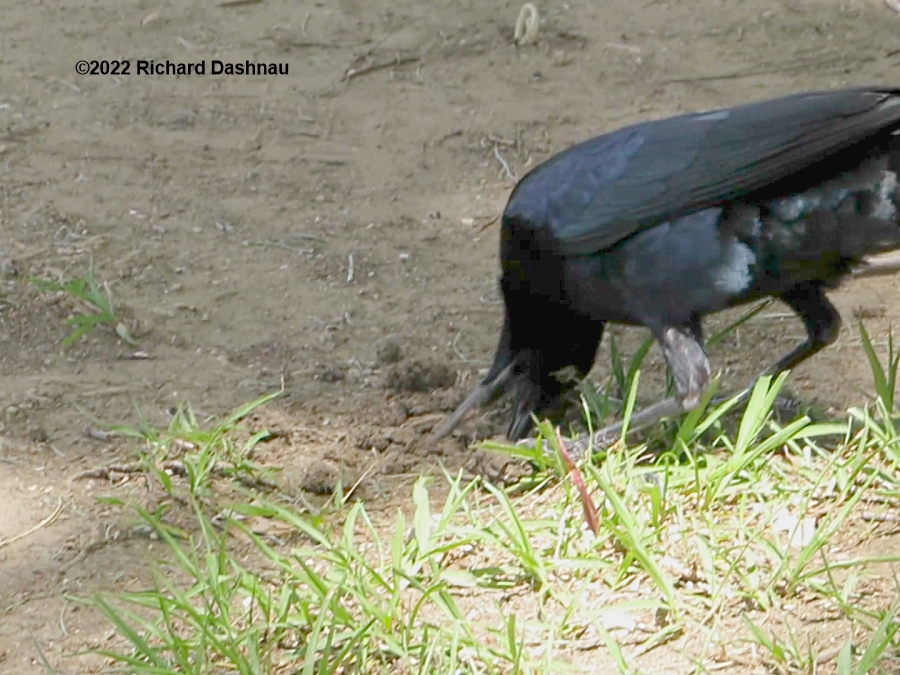
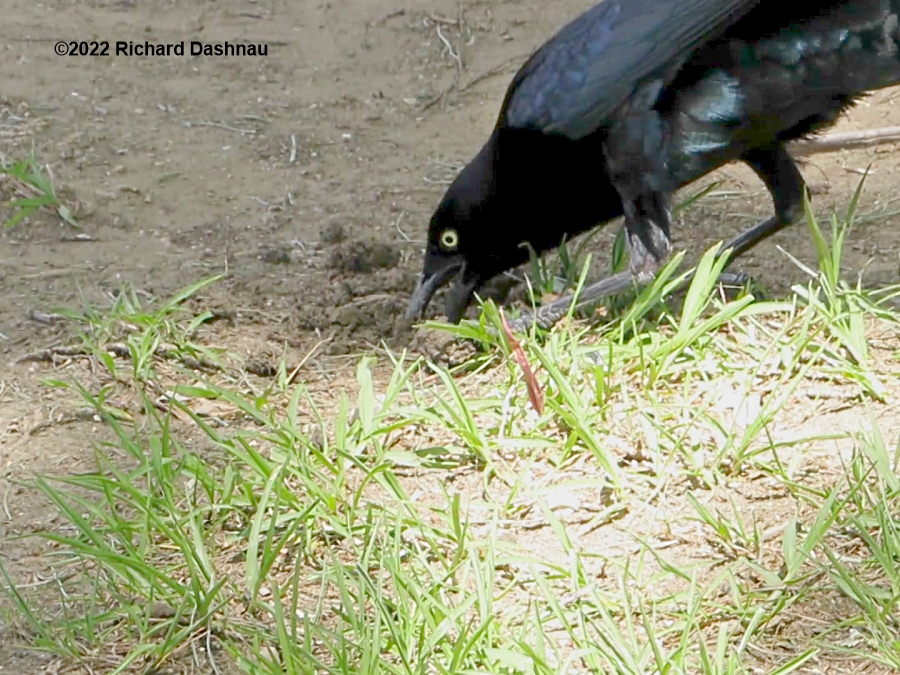
06/10/2017 and 07/04/2010
While volunteering at
Brazos Bend State Park, I've been asked about many things in the
park. Sometimes visitors will ask about the "beautiful black
birds with the
iridescent feathers" that they've seen. The birds are
usually male Grackles (Great-Tailed [Quiscalus mexicanus] or
Boat-Tailed [Quiscalus major] (which I can't tell apart)). I've
heard some people say
"Oh, those are just Grackles (or "*only* Grackles). All
birds can be amazing to someone. Many of our visitors at BBSP
are not from around here, and may have never seen a
Grackle. And, they
*are* beautiful. Grackles also can be fascinating because of
what they can do. Here are some examples that I've seen.
In July of 2010, I watched Grackles catching crawfish at
BBSP. When compared to the expert herons nearby, their technique
was imprecise and comedic, but some of the Grackles did succeed.
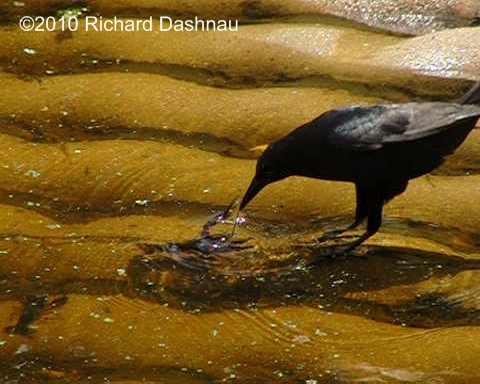
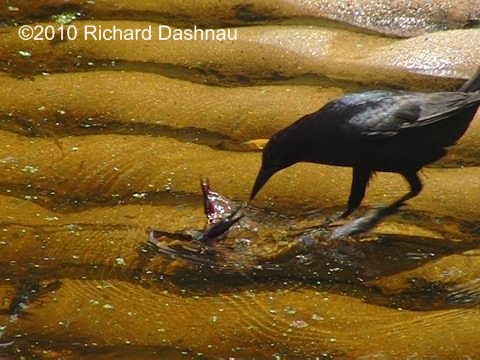
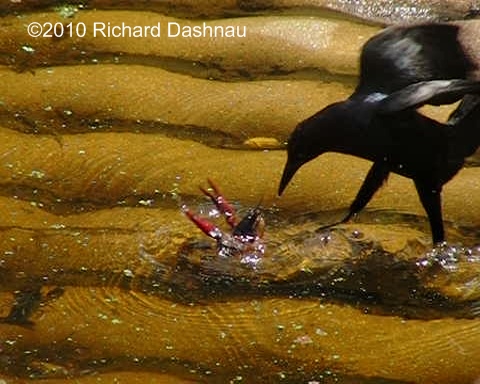
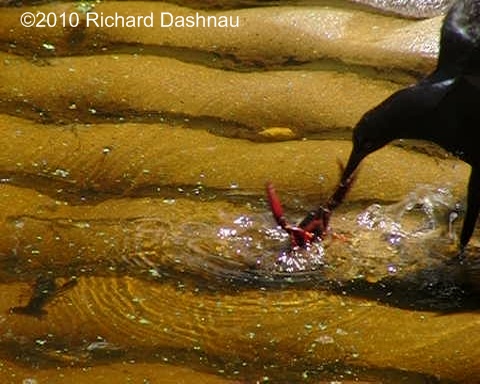
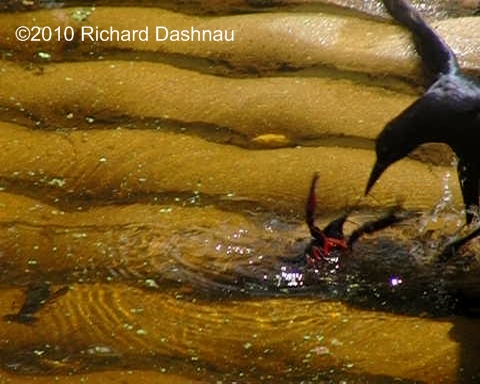
As
I
watched, I was impressed by a few things. First, crawfish aren't
likely to be "normal" prey for Grackles (though Grackles eat all
kinds of things). So at some point the Grackles had to learn
they were
good to eat. It's possible they could have stolen crawfish
from other birds or eaten their leftovers to learn this.
Second, I figured that the Grackles had to learn--somehow--how
to catch crawfish. To do that, there are issues like dealing
with the distortion caused by refraction, or even recognizing
prey in the water.
Third, even after a Grackle successfully snared a crawfish, it
sometimes seemed at a loss on what to do next. Those claws can
be intimidating. So, I began to wonder how Grackles might
have learned
how to do this, and I thought that they might have learned by
watching other, more successful wading birds. But after time
passed, I stopped thinking about Grackles foraging in water.
My video of the Grackles eating crawfish can be seen at this link. (update 6/20/2020) I had
more video shot the same day of a single Grackle as it works
with a single crawfish. I've put that together
into a new, 17 minute video at this link. Then,
on
June 10, 2017 (last weekend) I watched Grackles catching fish at
Bishop Fiorenza park. Again, I noticed that the Grackles'
technique was less efficient than
the Egrets' near them. I thought that the Grackles had to
develop their *own* technique. It certainly involved more effort
than the Herons and Egrets used. High-speed Video of their
efforts is here.
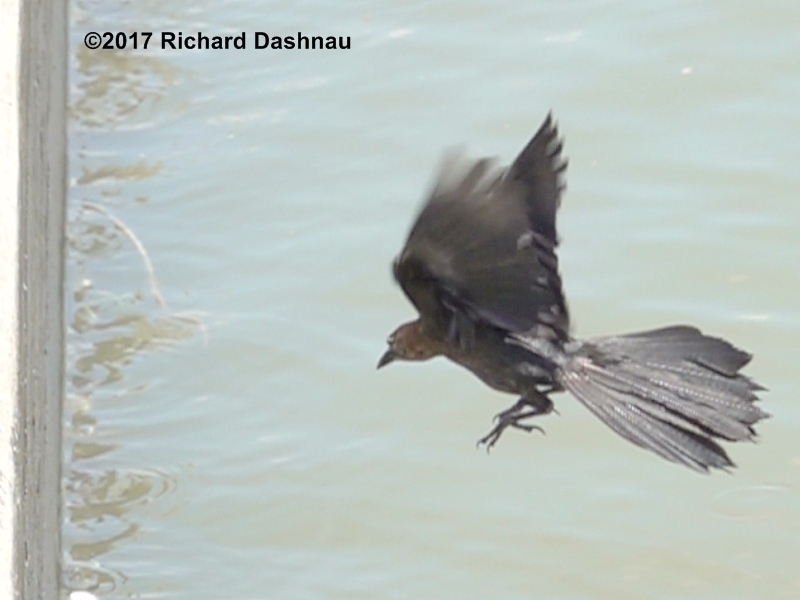
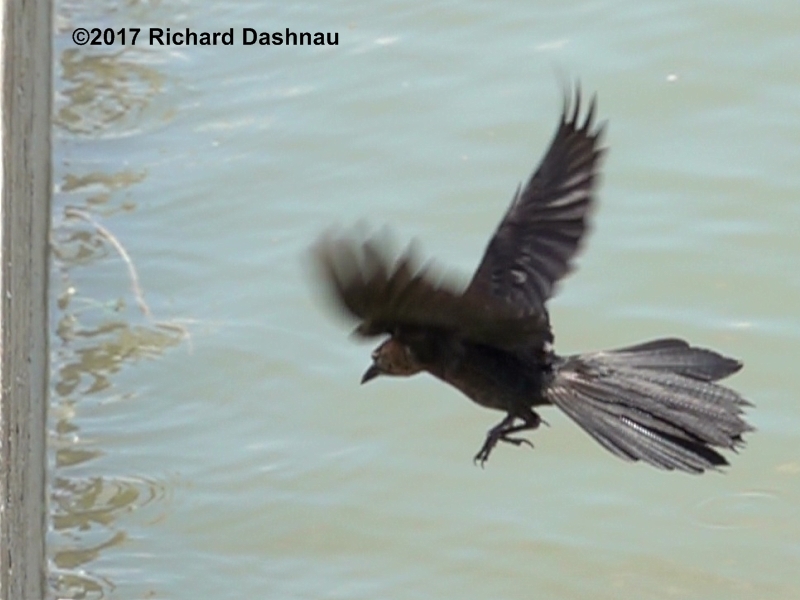
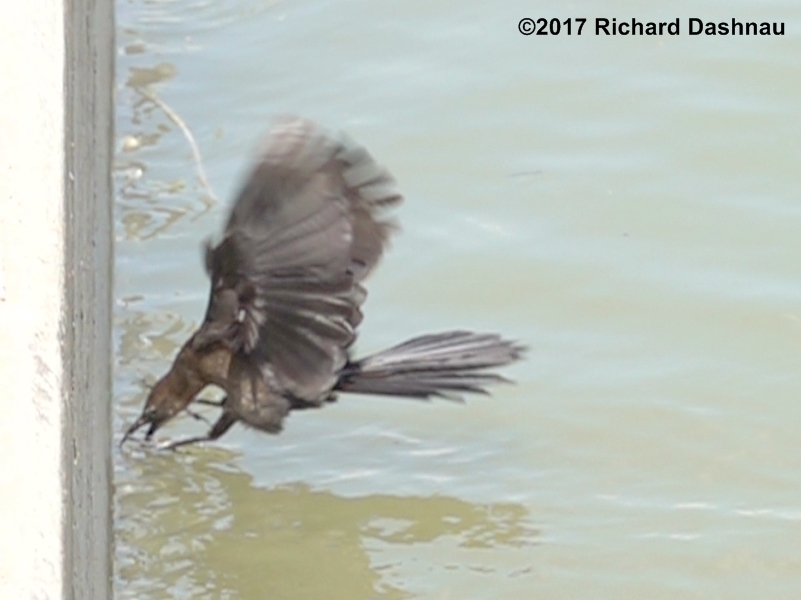
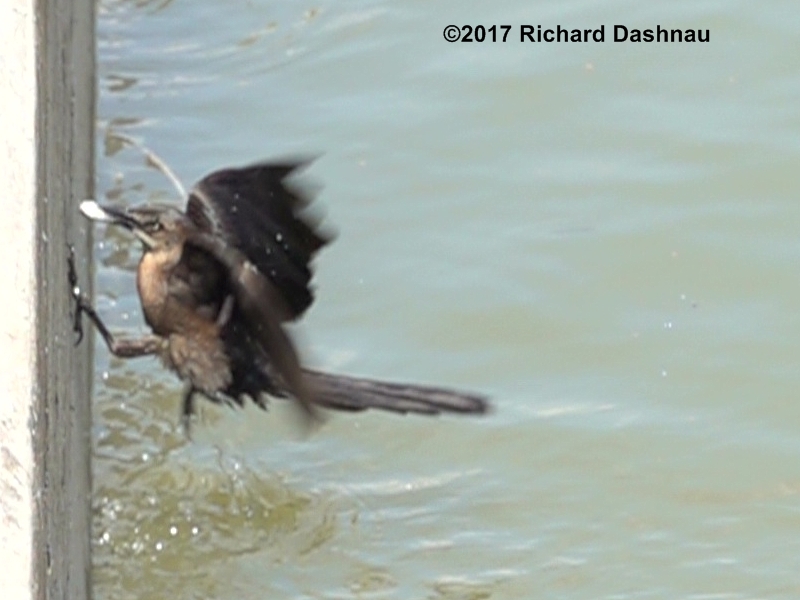
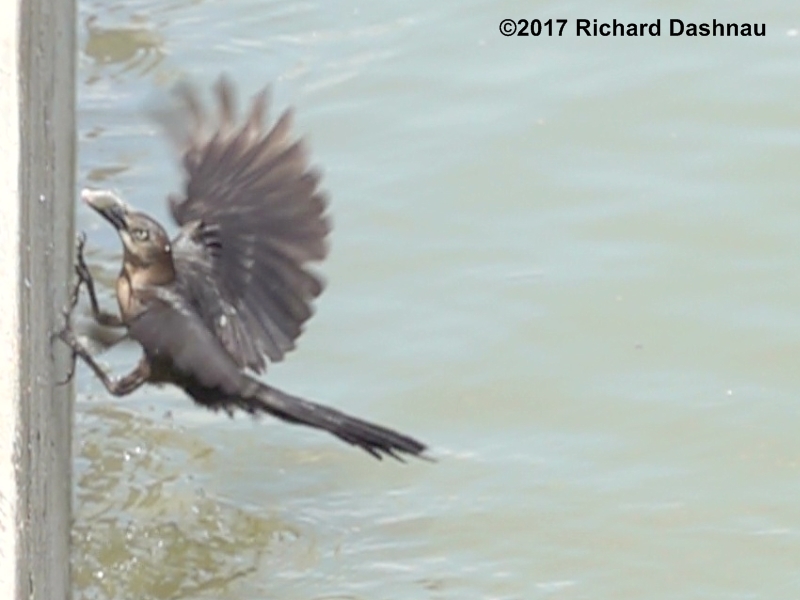
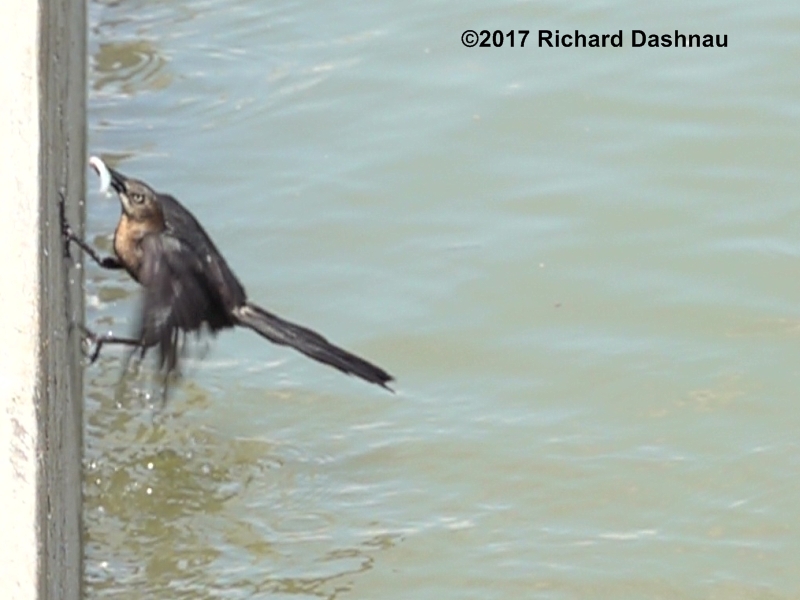
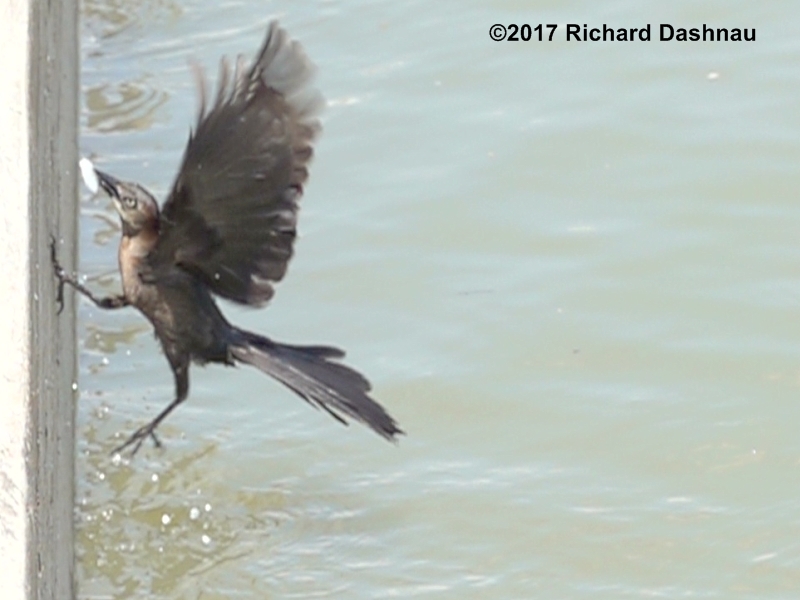
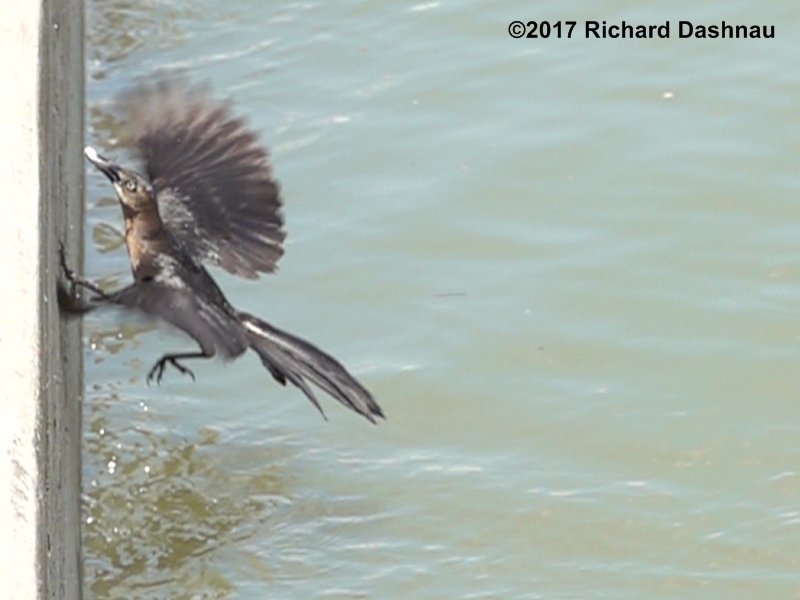
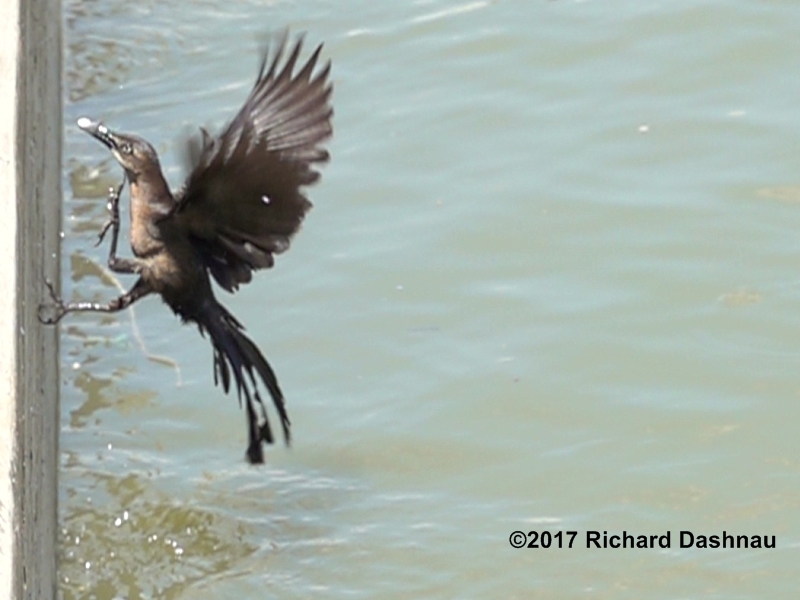
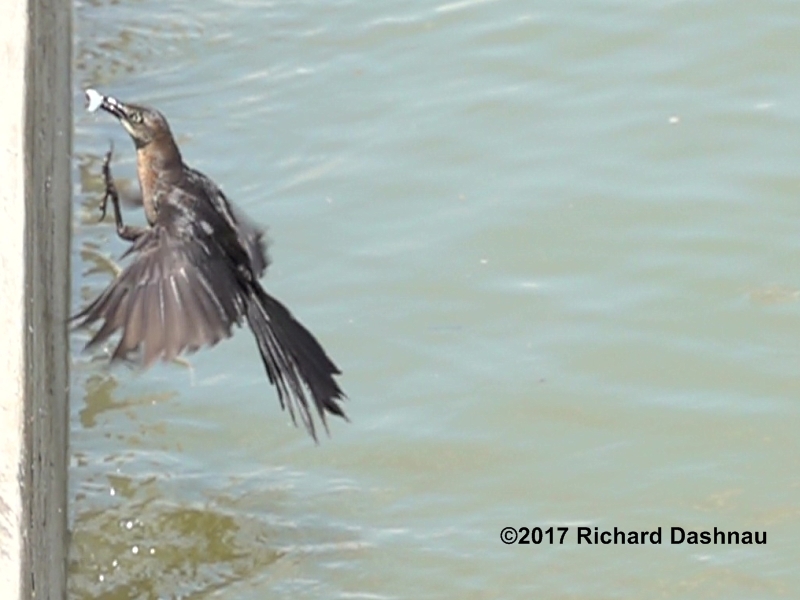
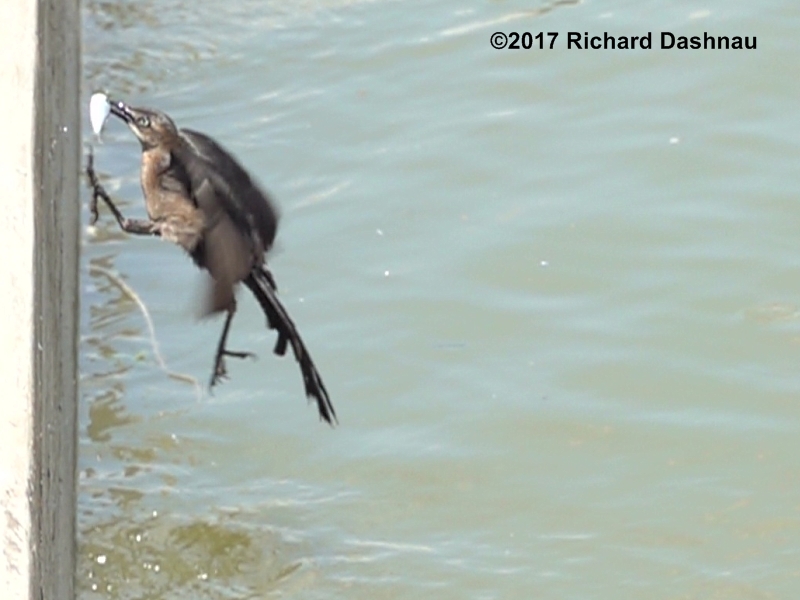
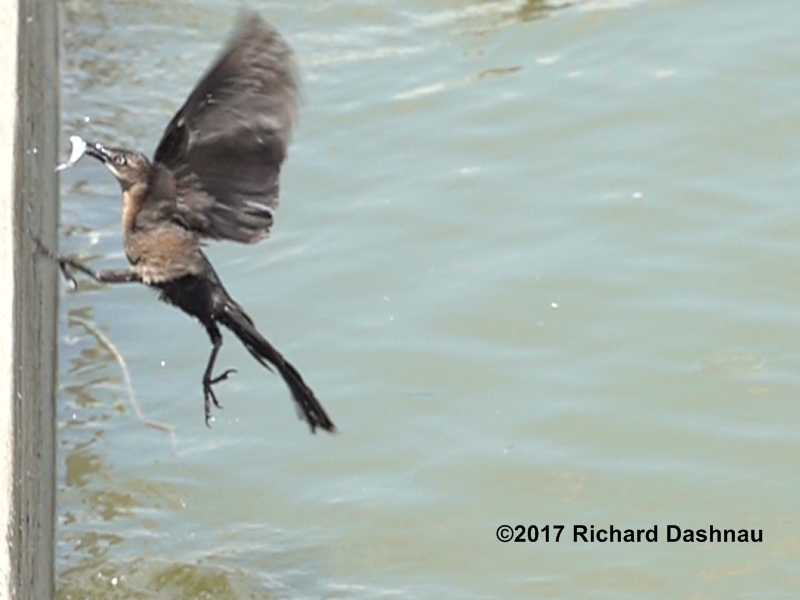
This
time,
I looked online for information about Grackle intelligence &
I found studies by Corina Logan on Great-Tailed Grackles which
showcase their "Behavioral flexibility".
Here are 2 articles that describe her work. article
1 article
2
Basically Grackles (in the family of Icterids) haven't proven to
be the "innovators" (or tool-users) that Crows or Ravens ( in
the family of birds called Corvids) are. But, they can adapt
their behavior to meet new challenges.
For more information, visit Corina
Logan's page.
04/02/2006 (added 2/17/2025)
Brazos Bend State Park The White Ibis
picked at a crawfish while the Grackle watched very closely. The tail
was already gone, and the Ibis tried to pick
inside the crawfish's body. The Grackle waded in, but the Ibis wasn't
finished. The Ibis grabbed one last bite of meat, then left the remains.
The Grackle claimed the carcass; and
showed the Ibis how to eat a crawfish! A demonstration of how Grackles
can exploit almost any food source. The edited video is here.
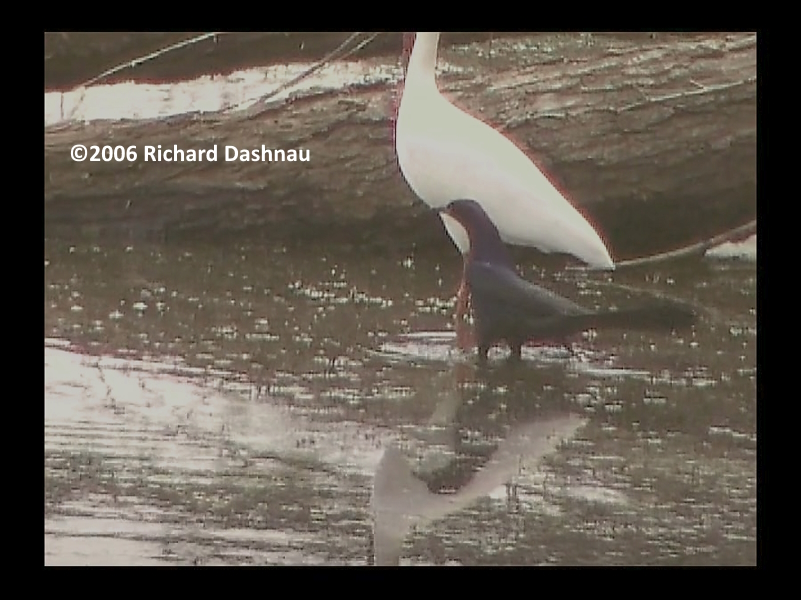
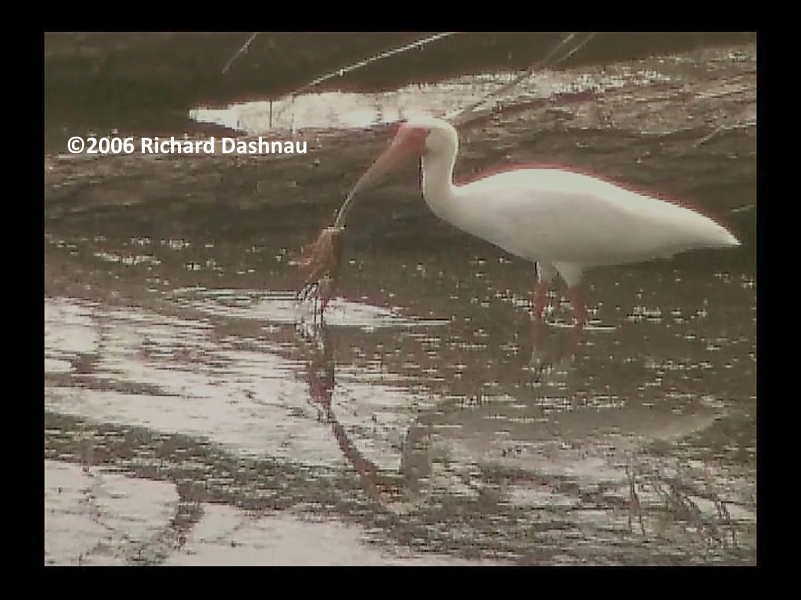
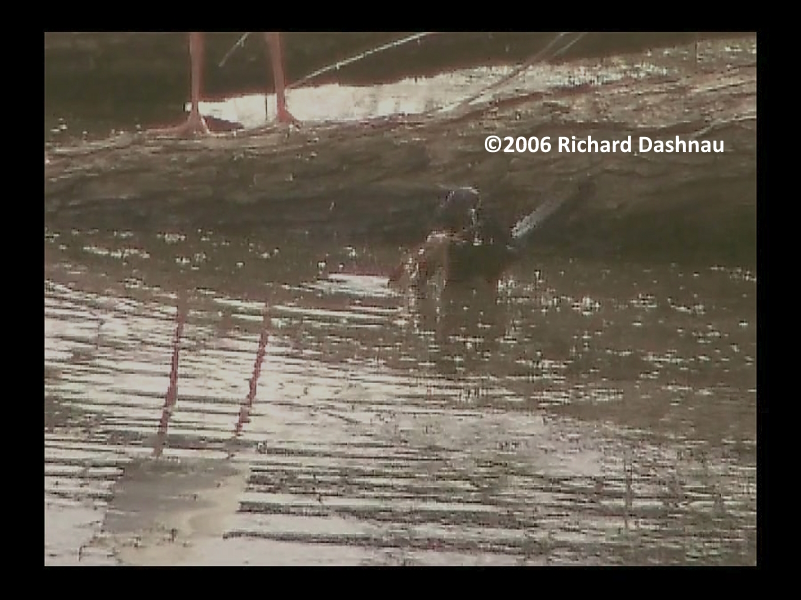
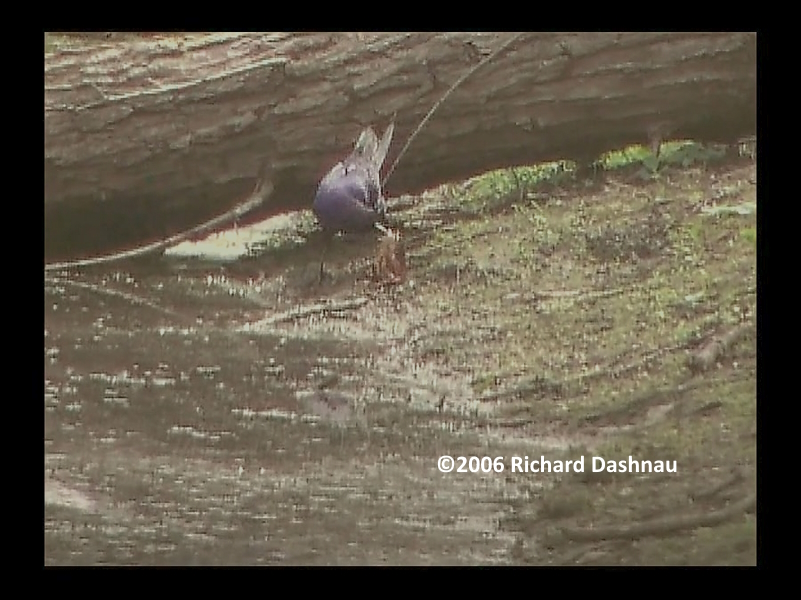
Go back to my
home page, Welcome to rickubis.com
Go back to the RICKUBISCAM
page.
Go back to the See
the World page.
 ◄◄◄ at Brazos Bend State Park in 08/06/2023.
◄◄◄ at Brazos Bend State Park in 08/06/2023.






























































